
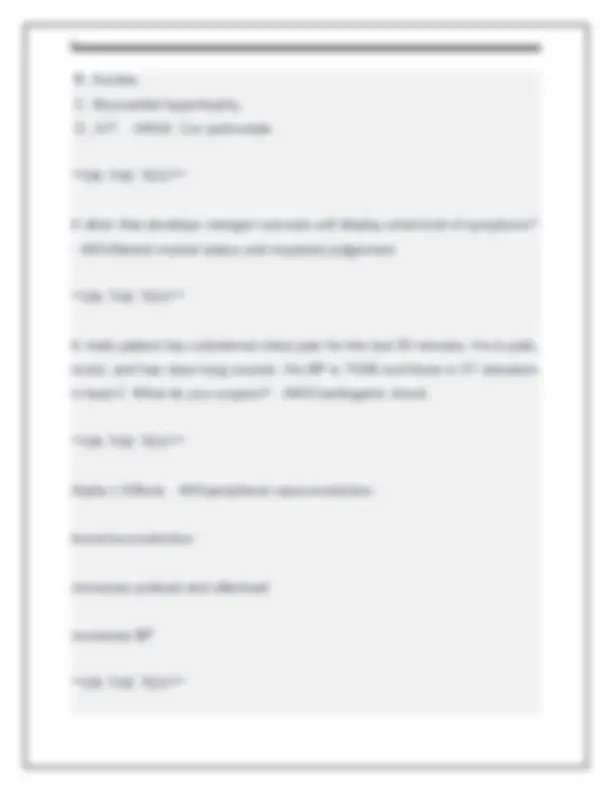
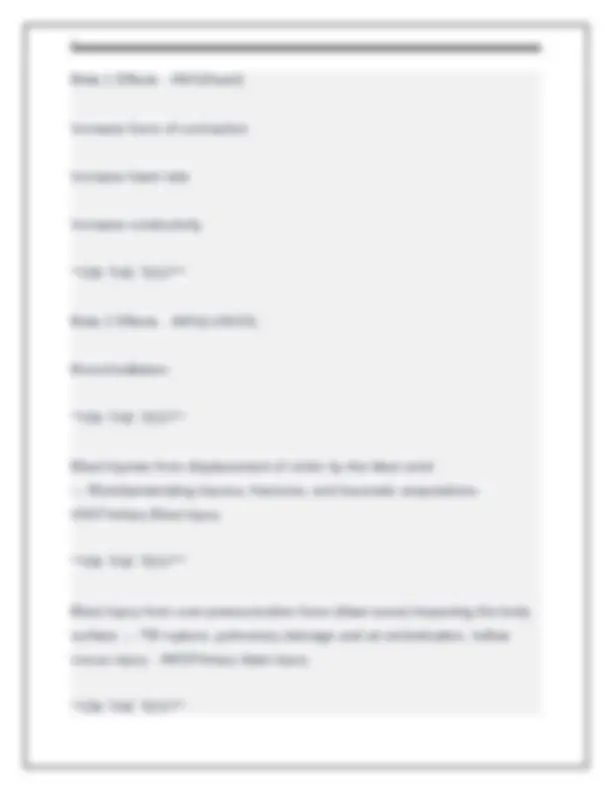
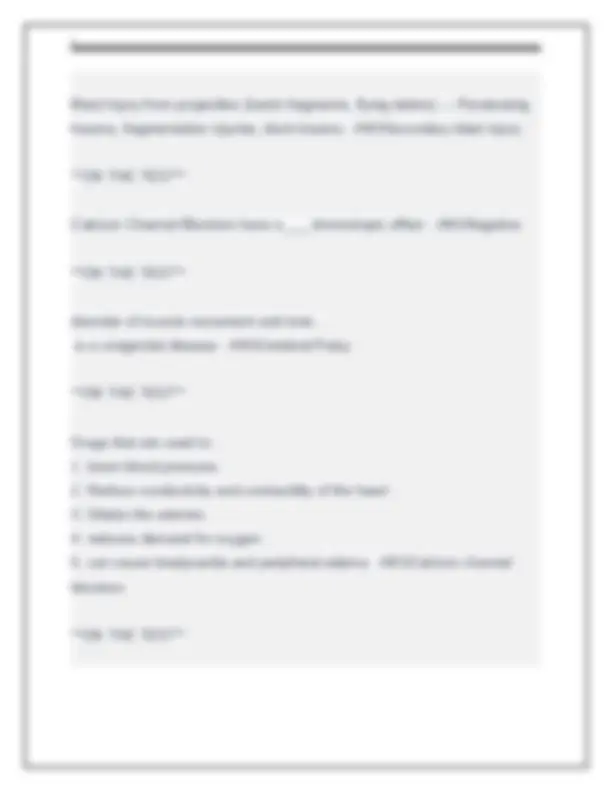
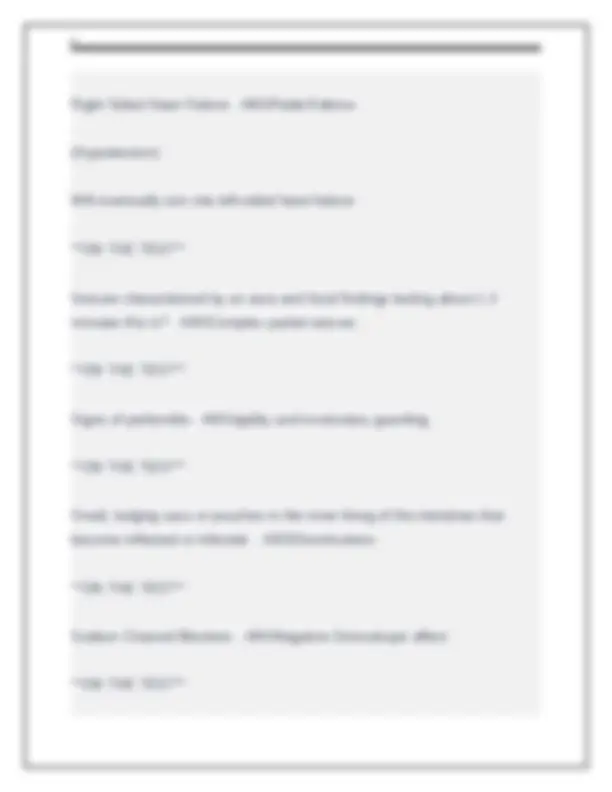
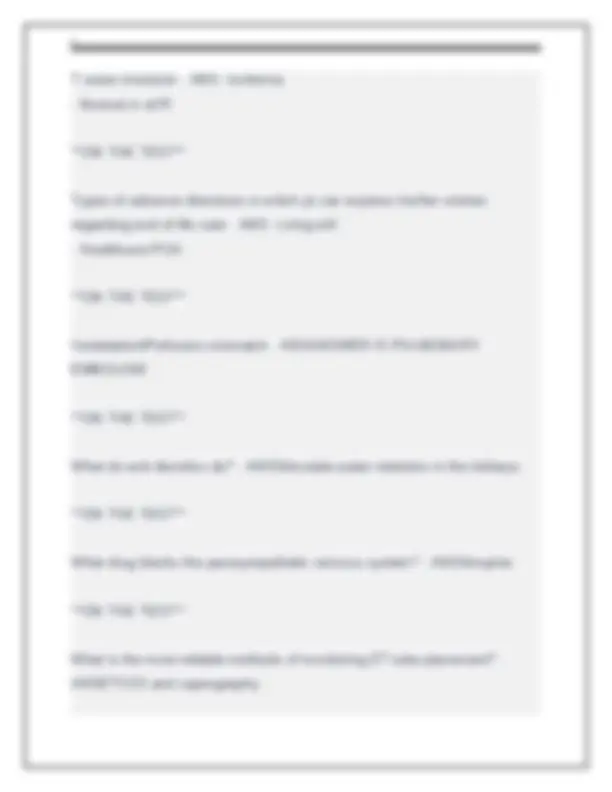
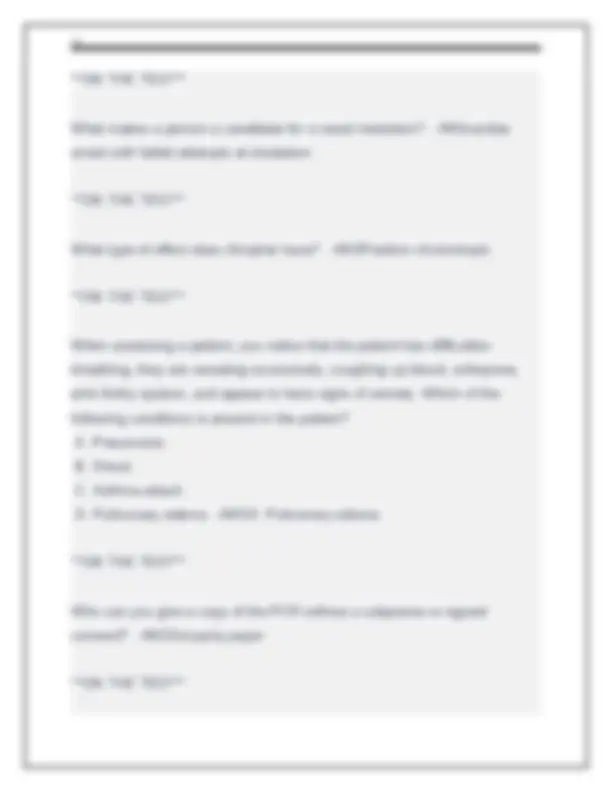
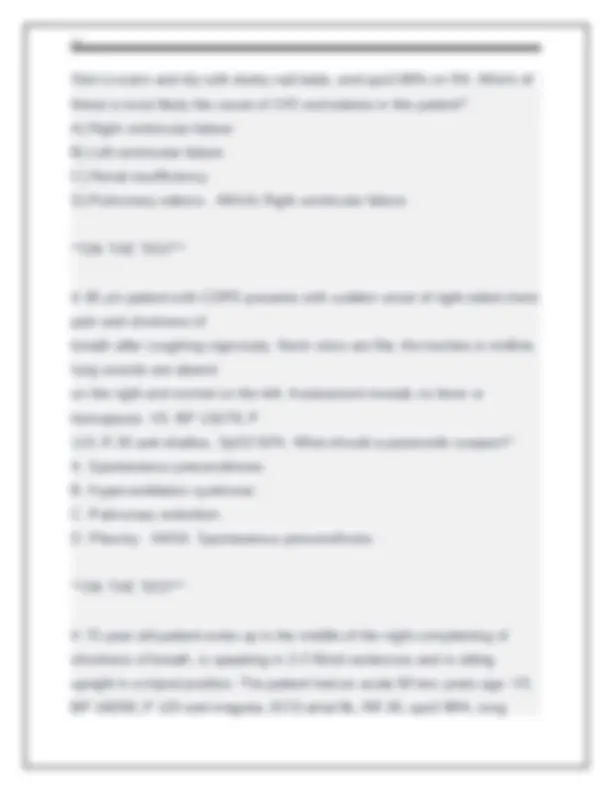
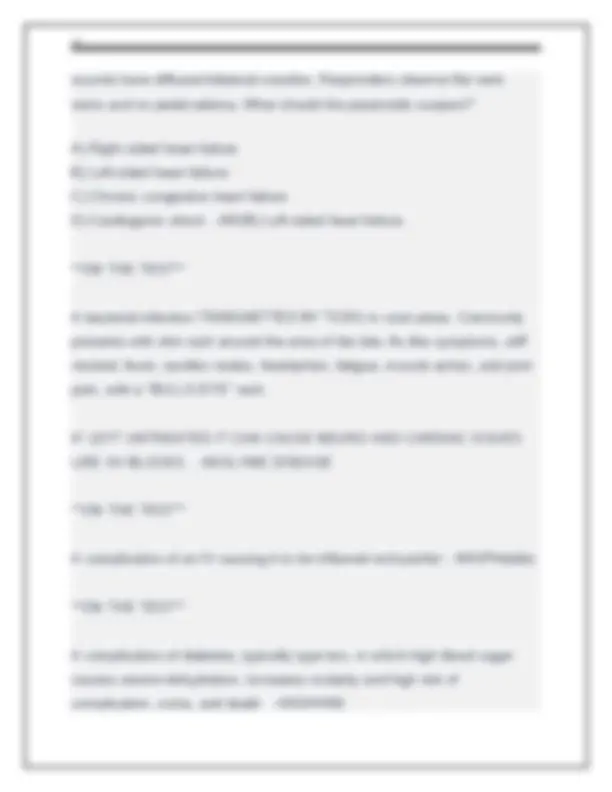
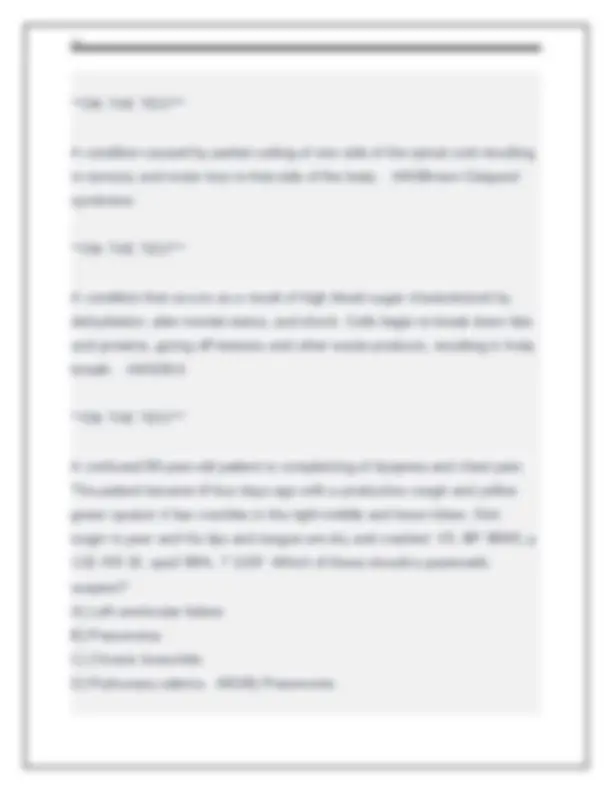
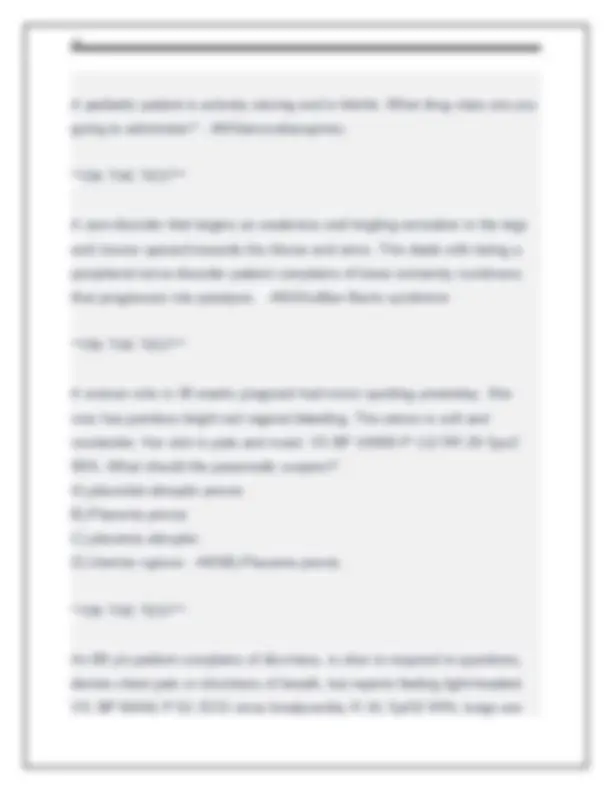
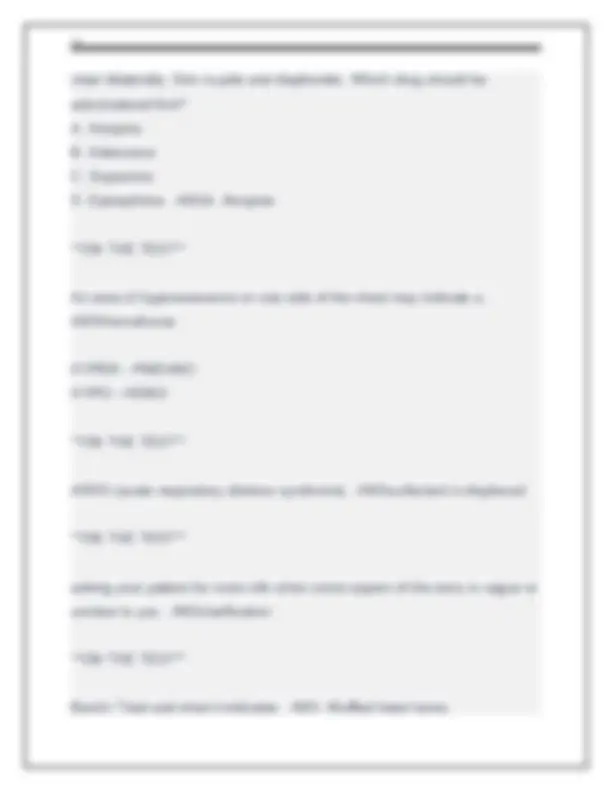
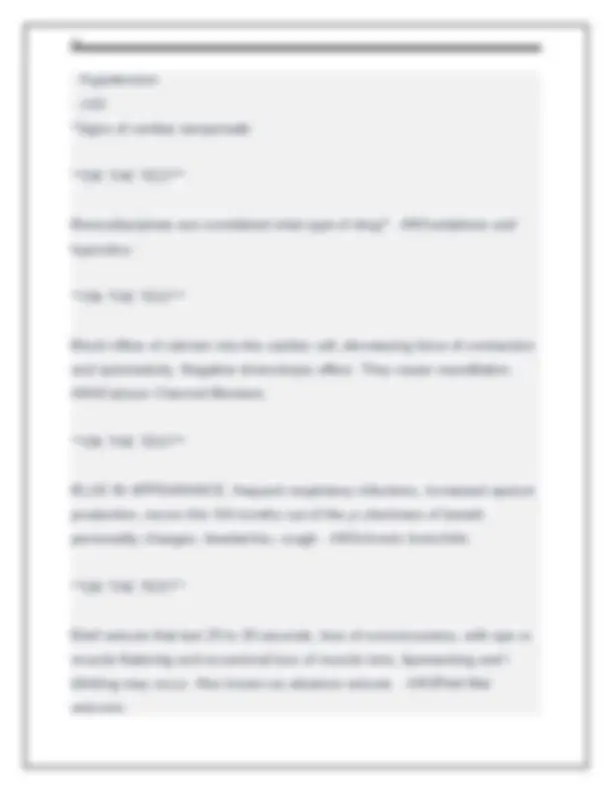
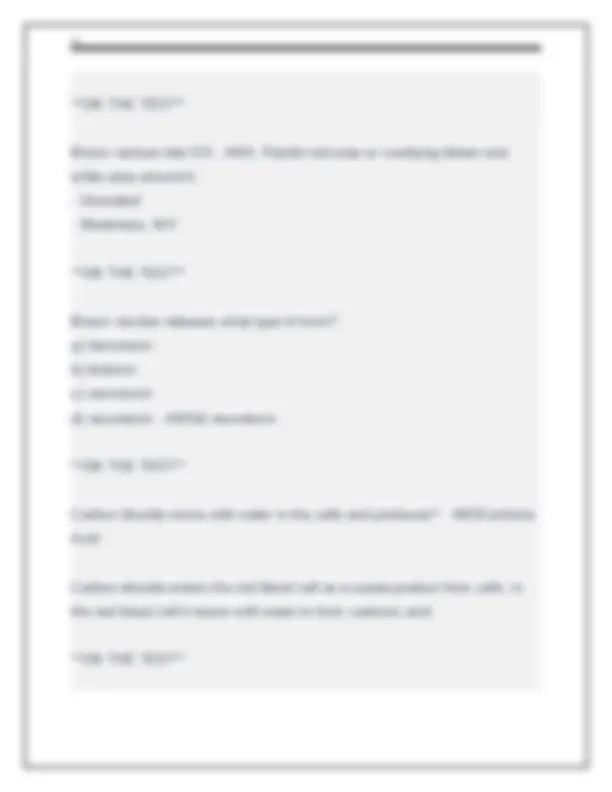
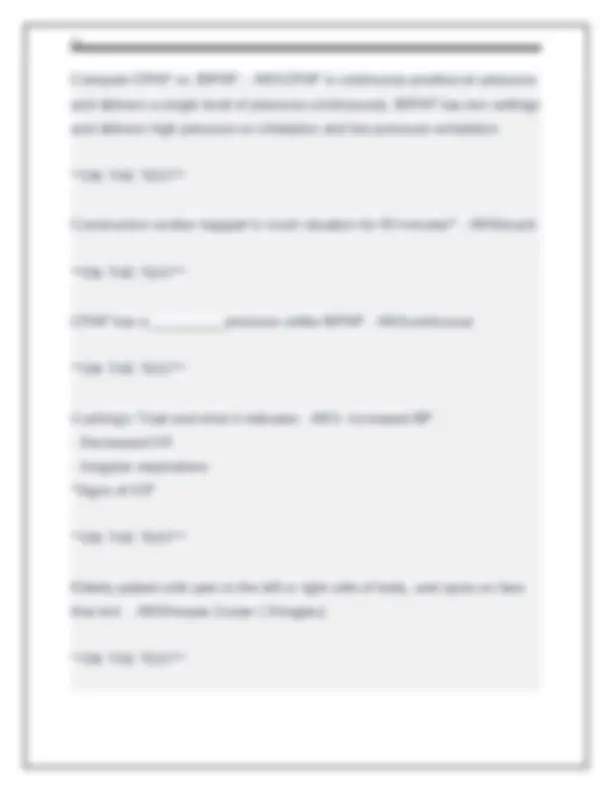
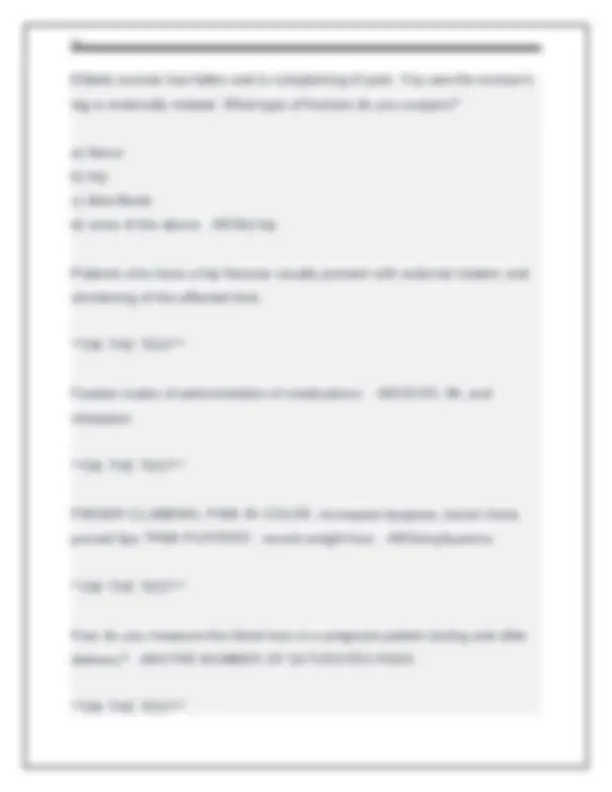
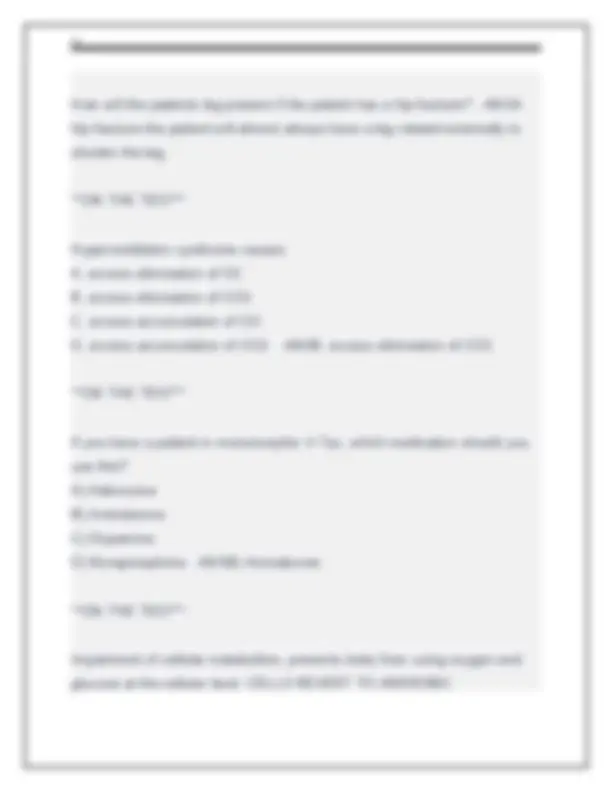
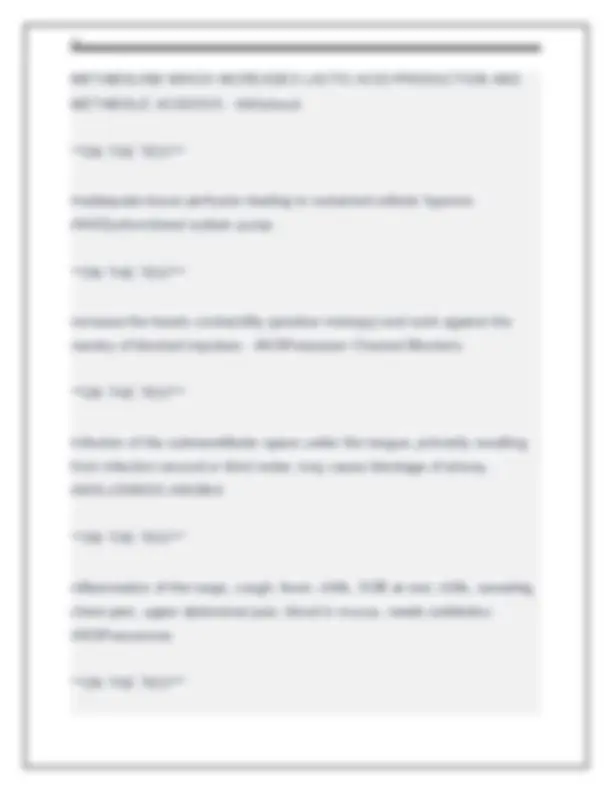
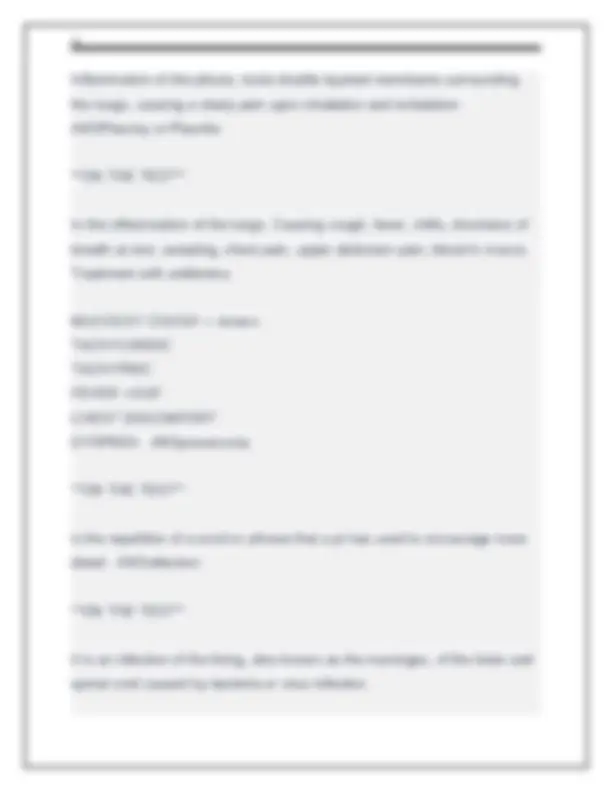
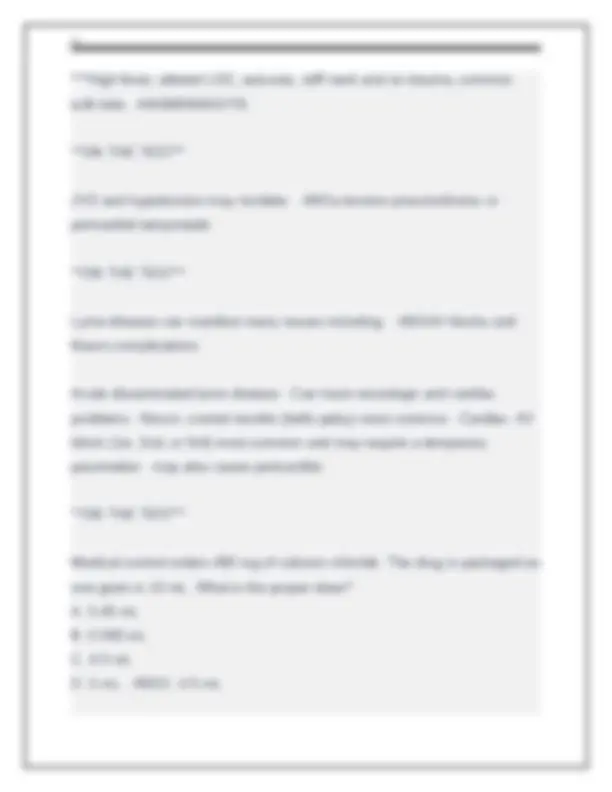
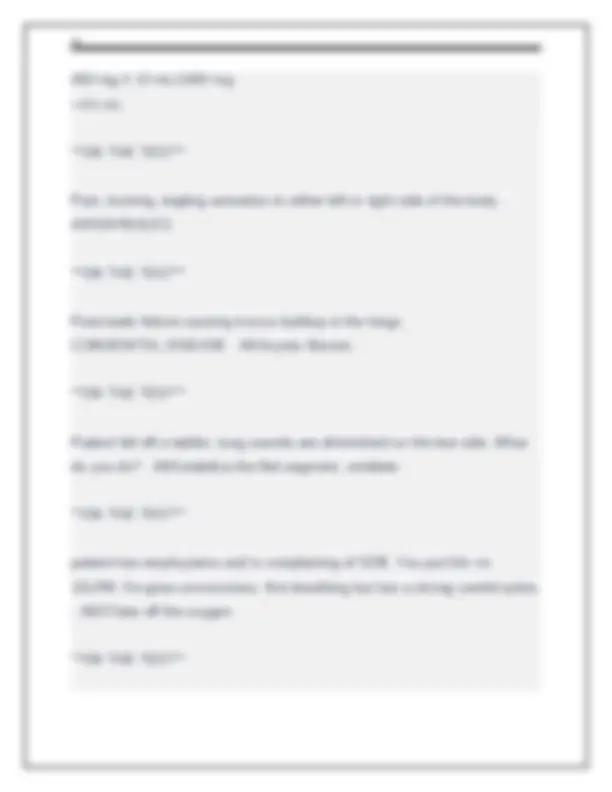
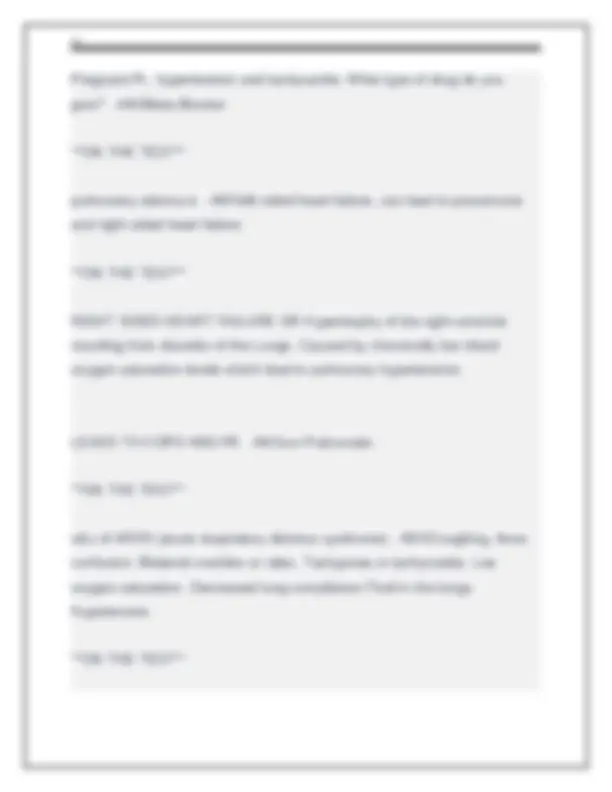
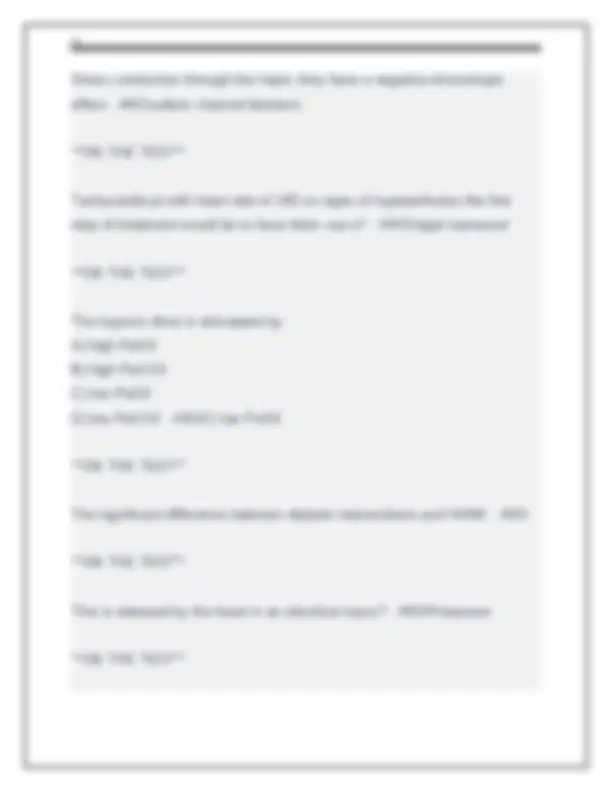
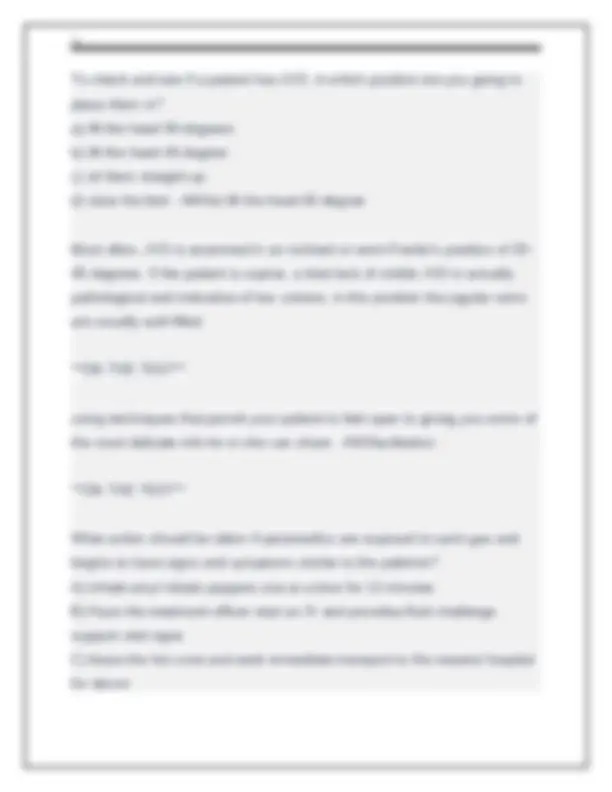
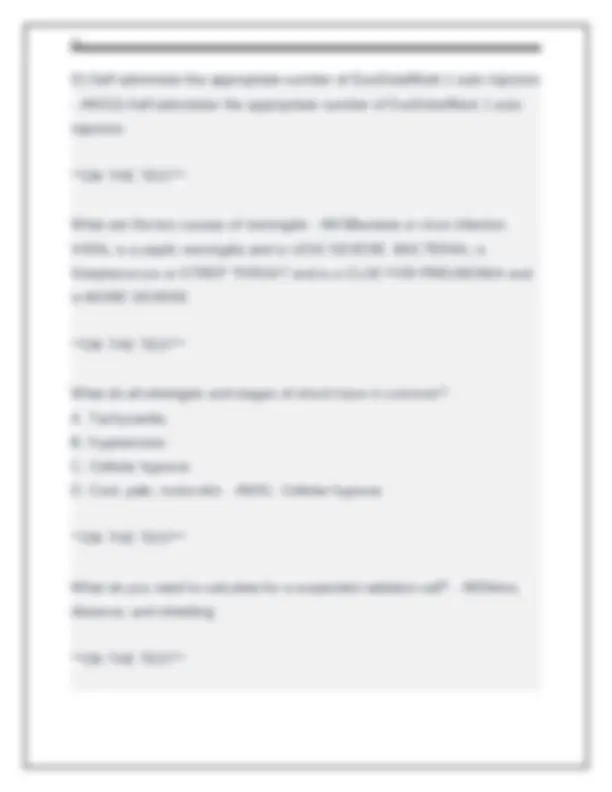
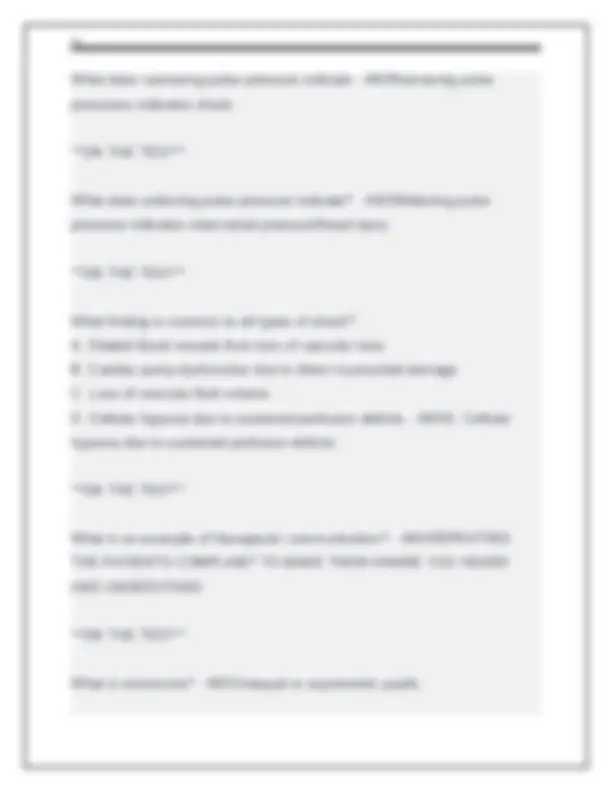
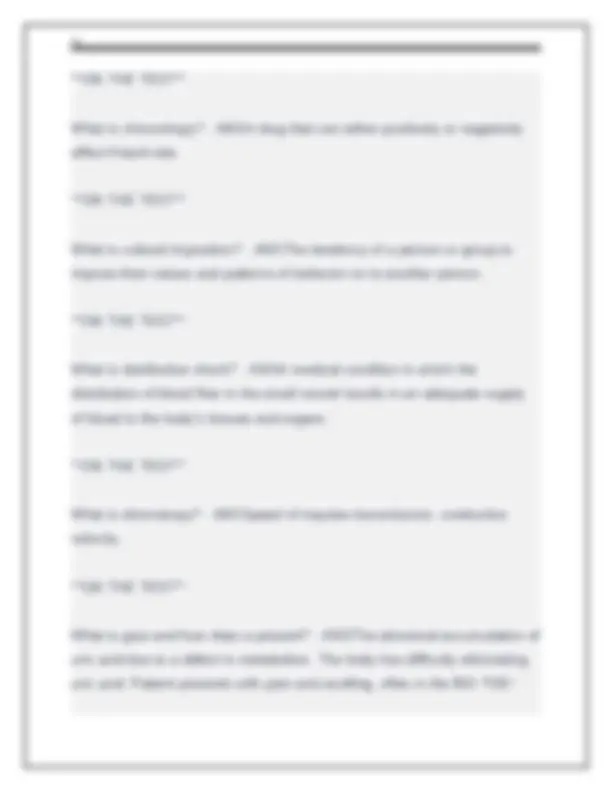
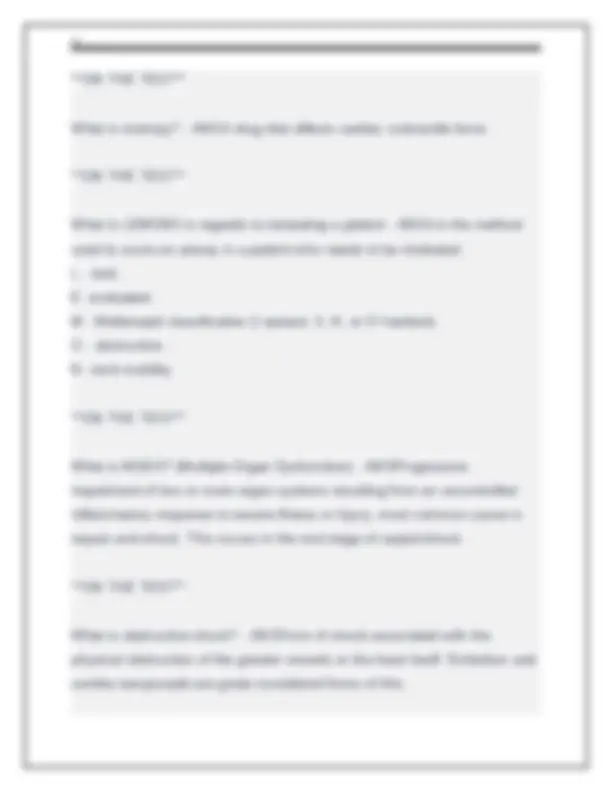
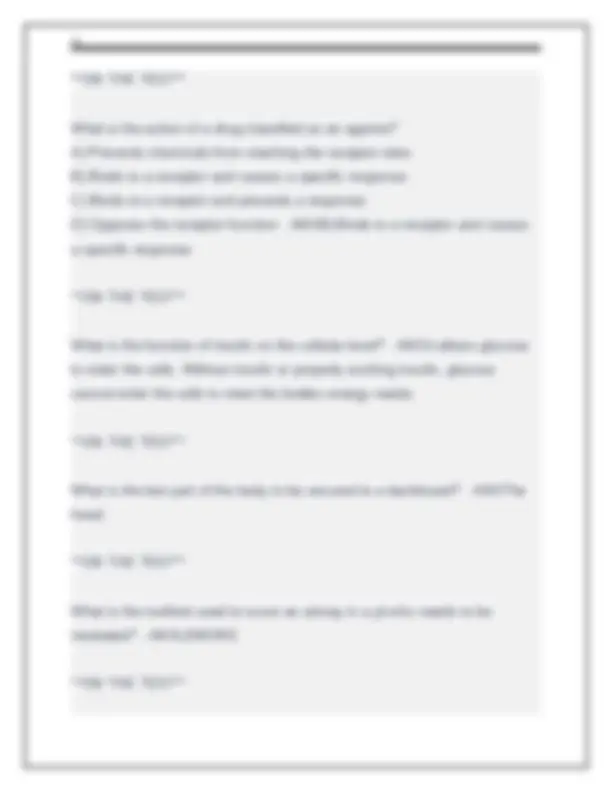
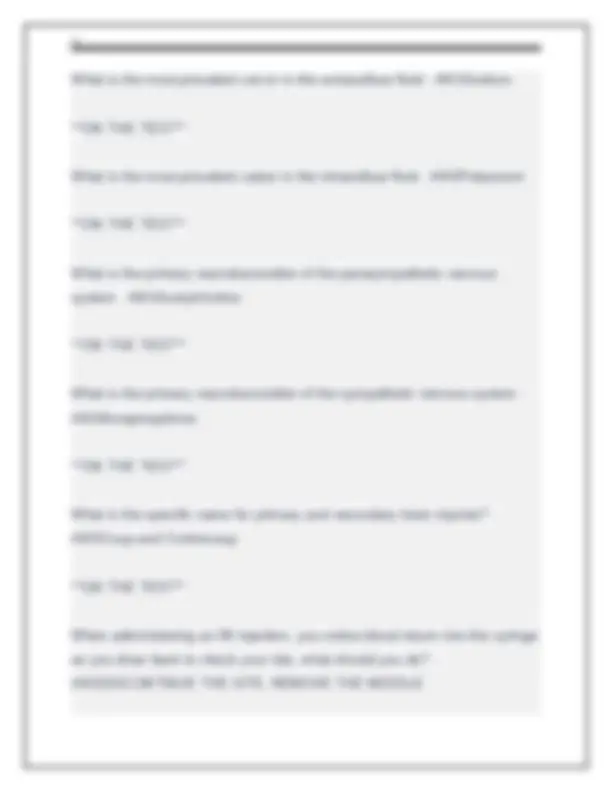
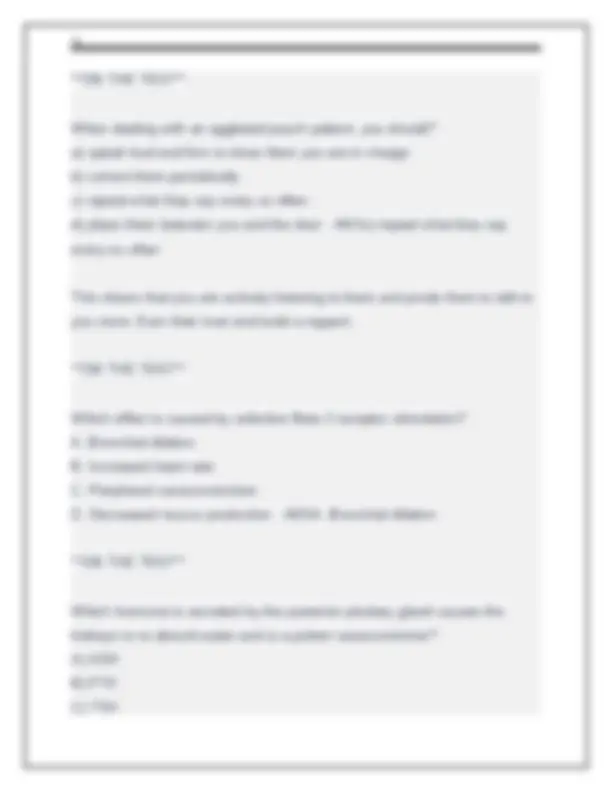
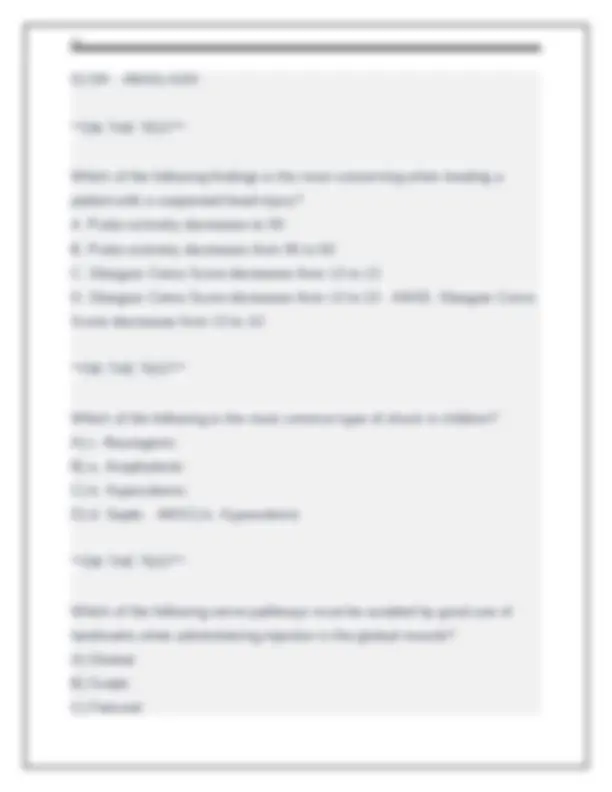
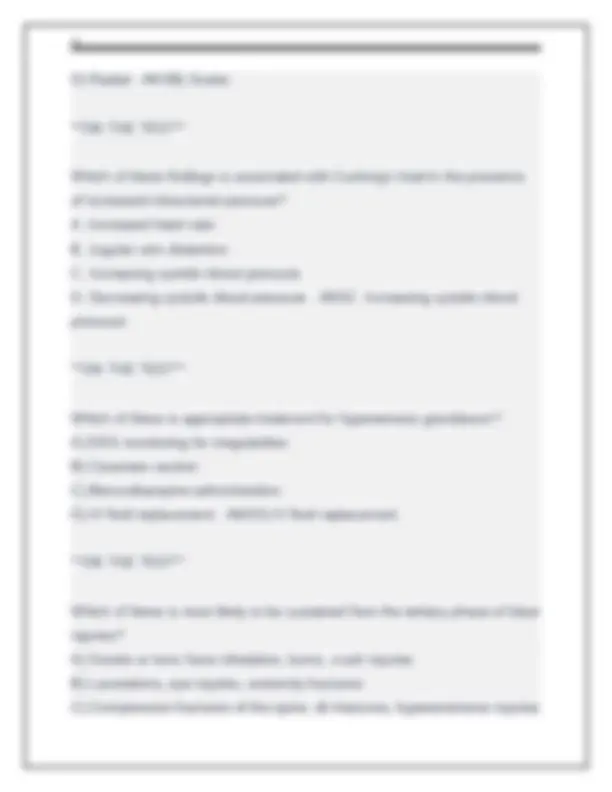
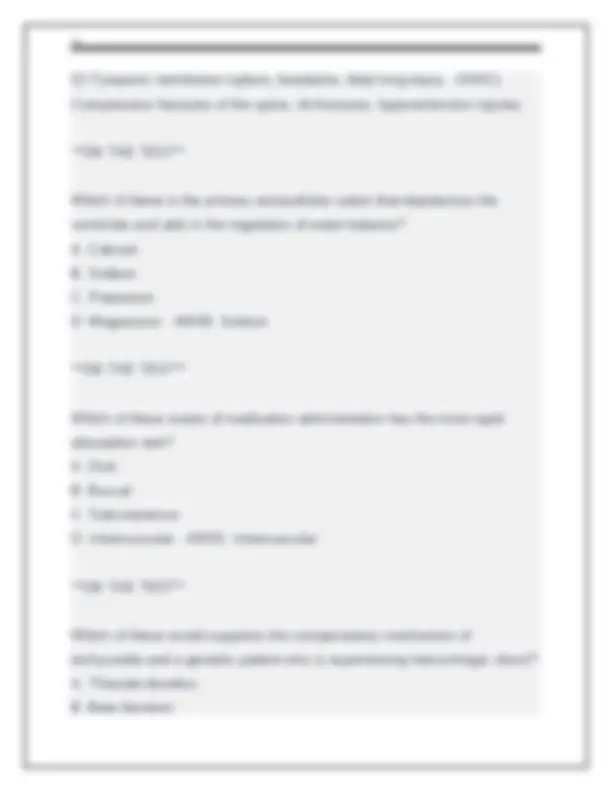
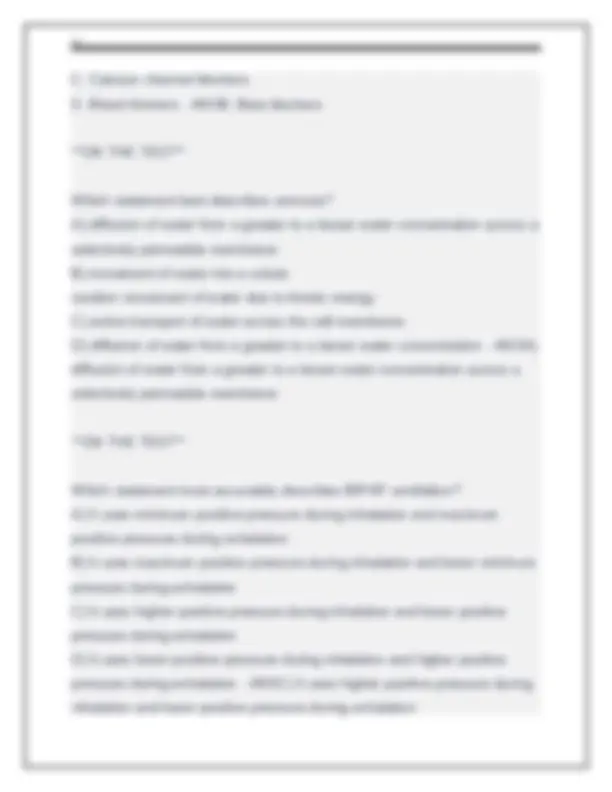
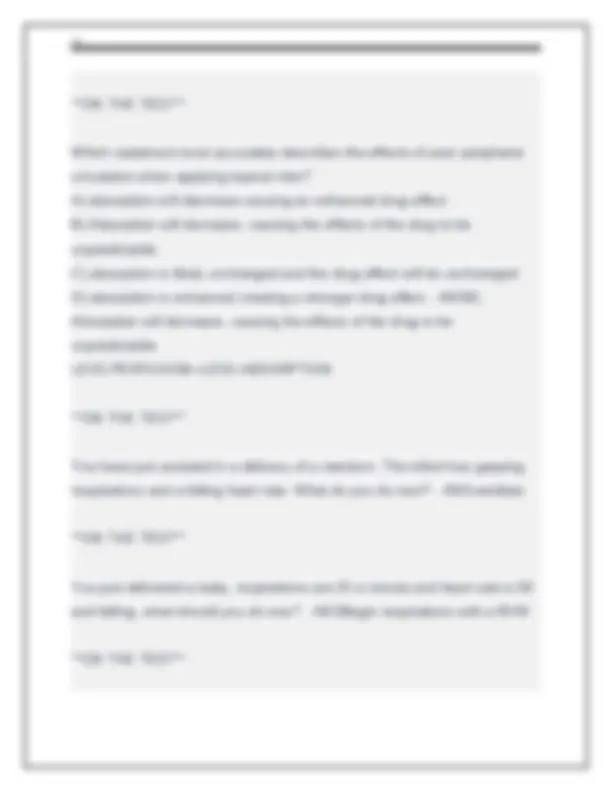
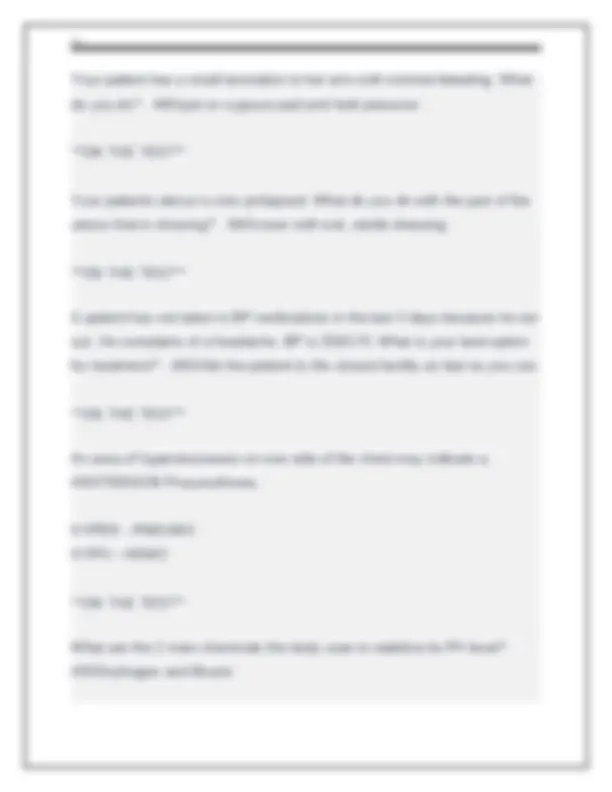
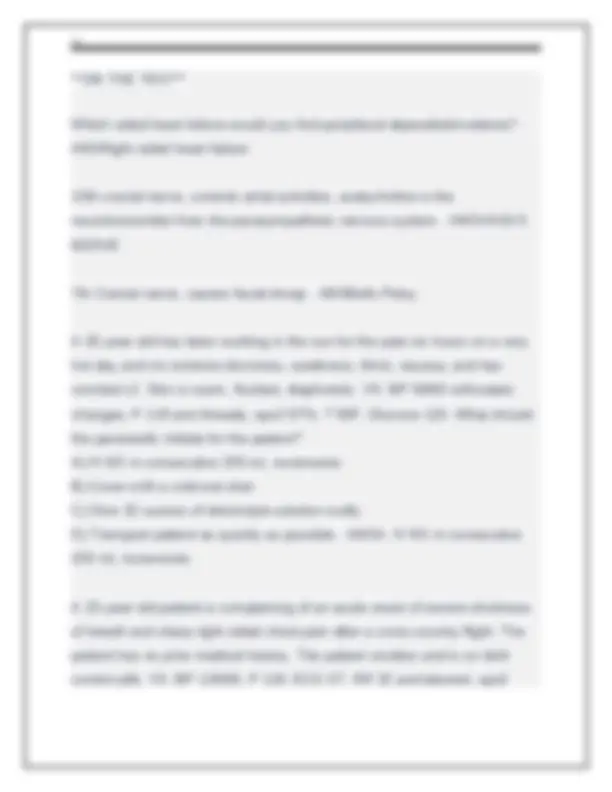
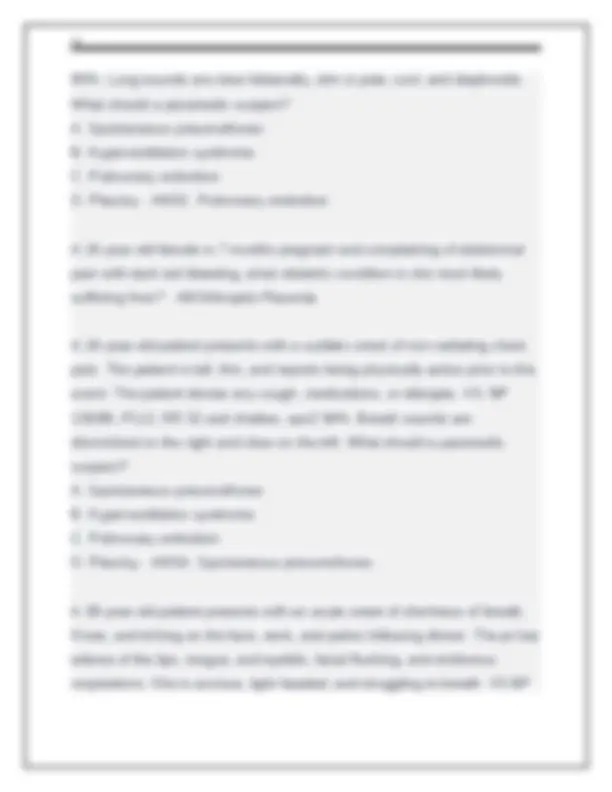

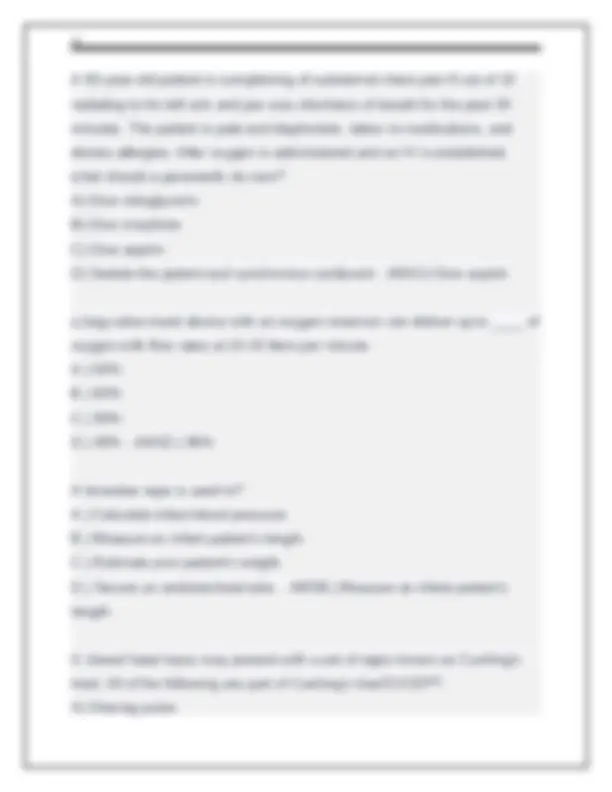
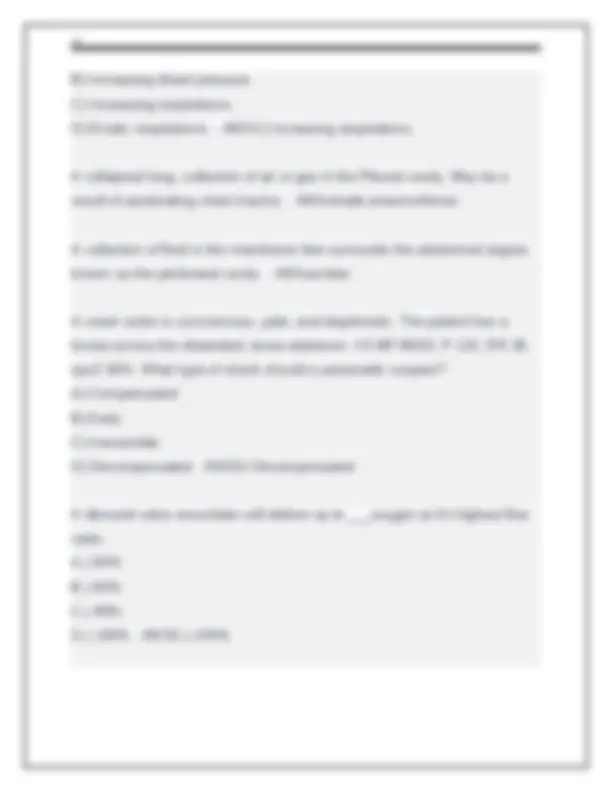
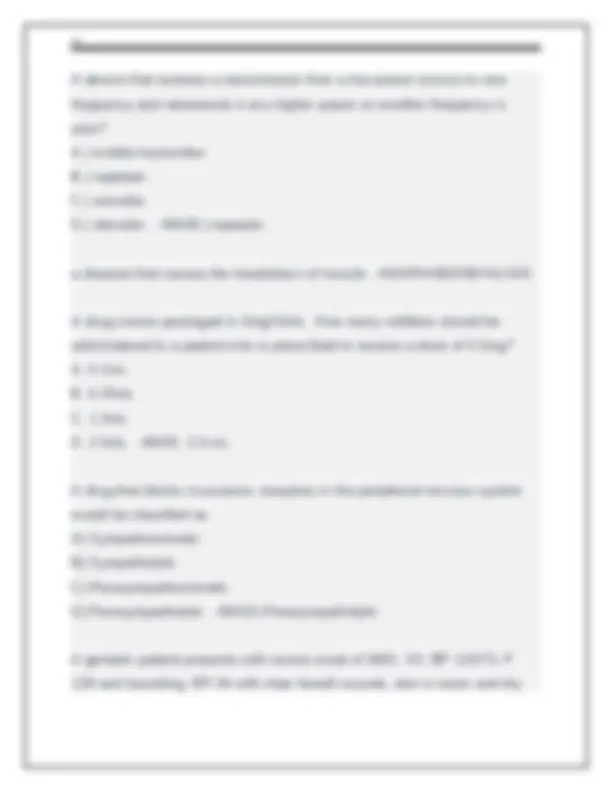
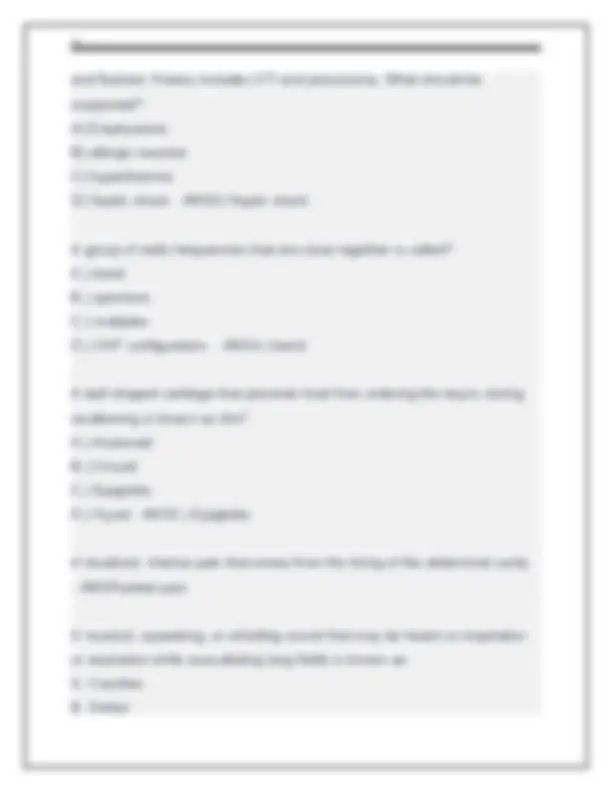
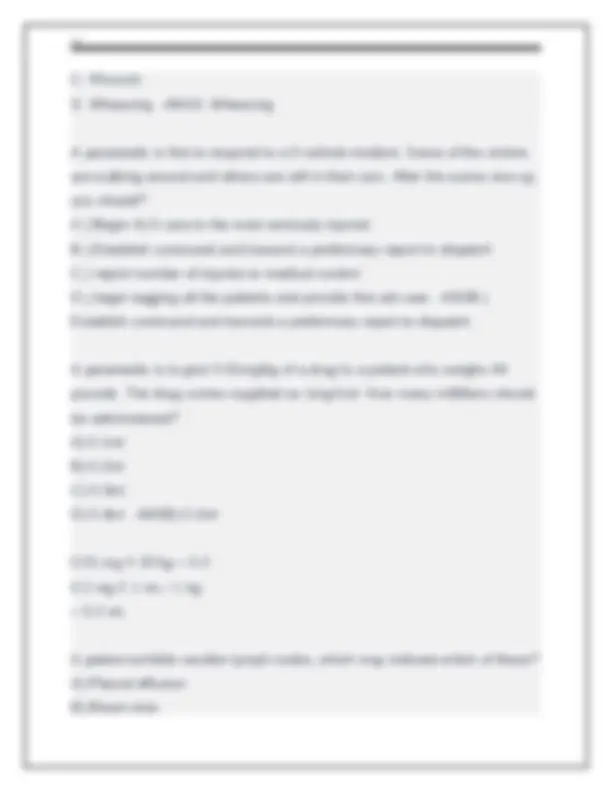
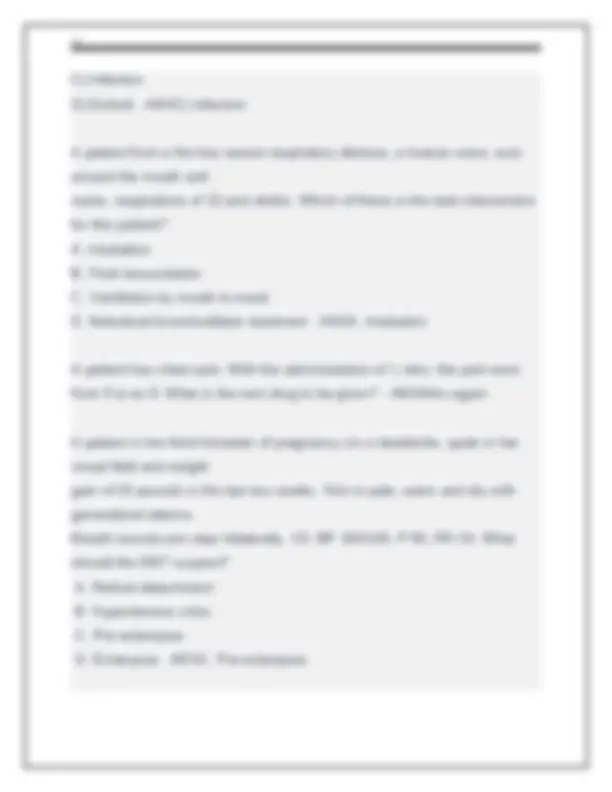
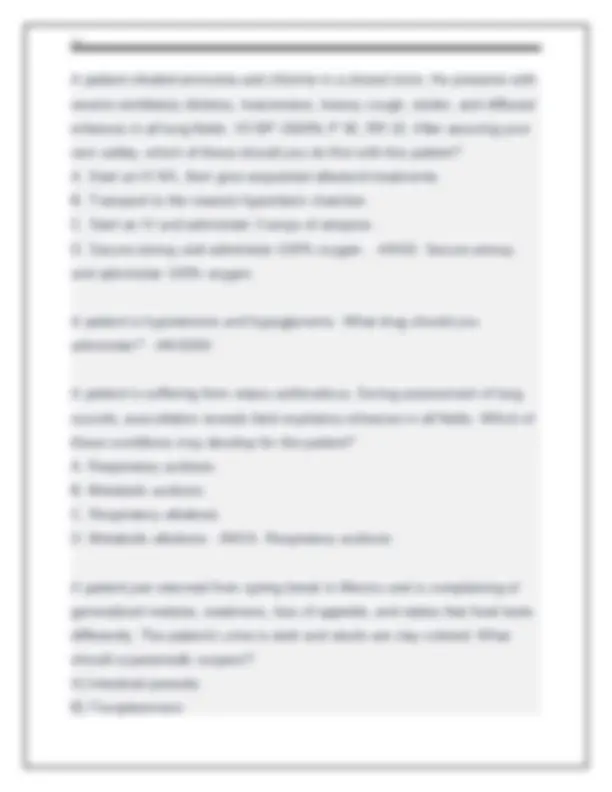
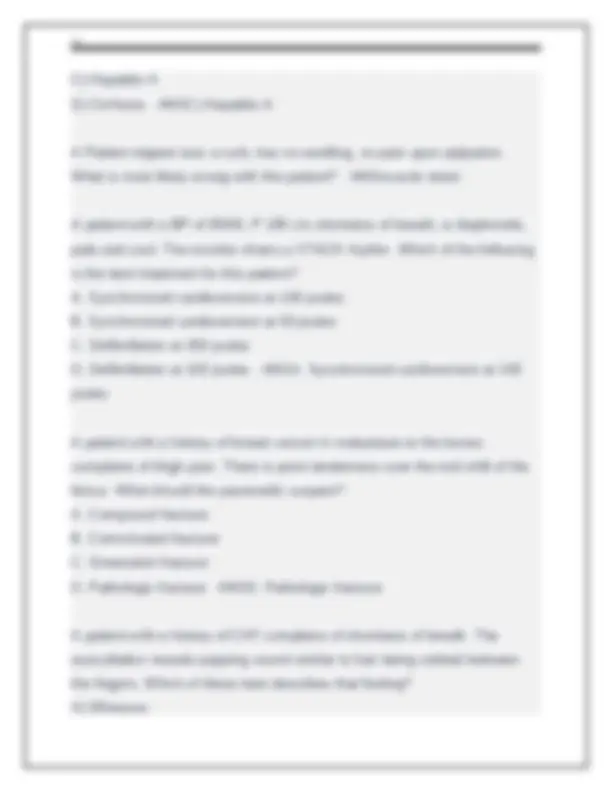
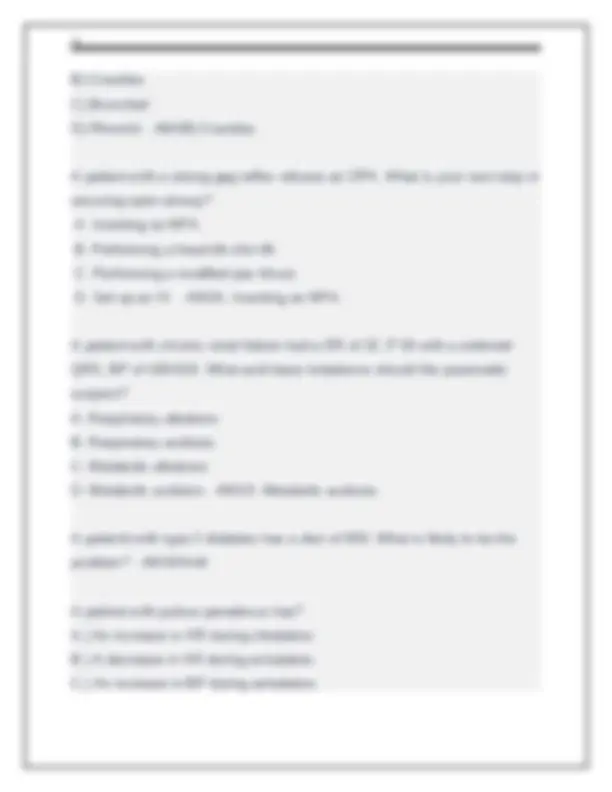
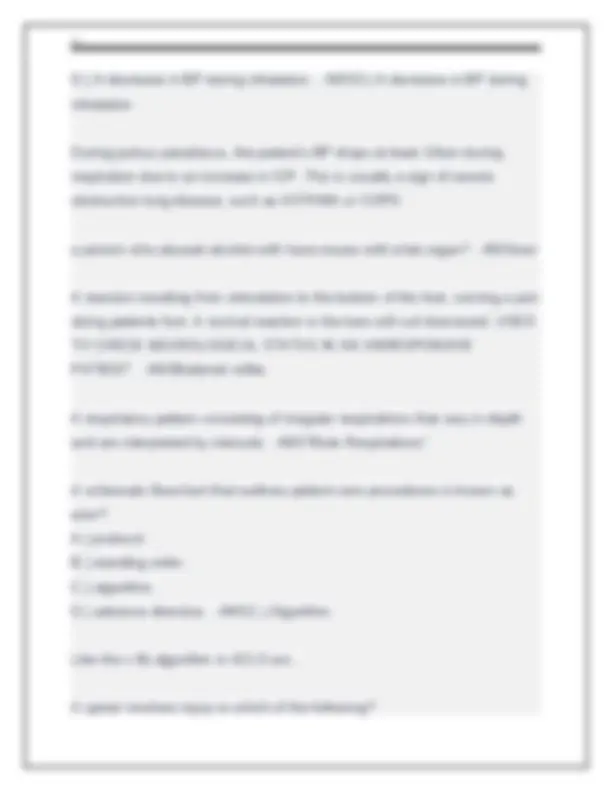
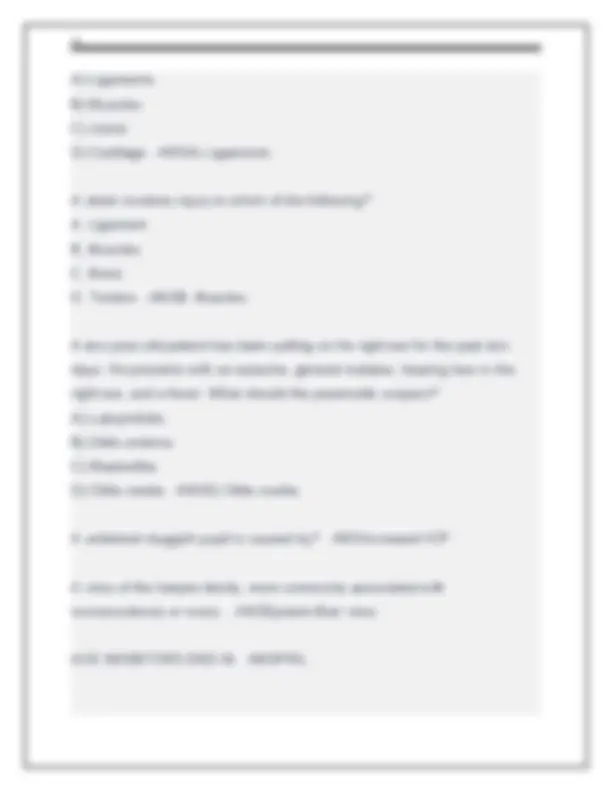
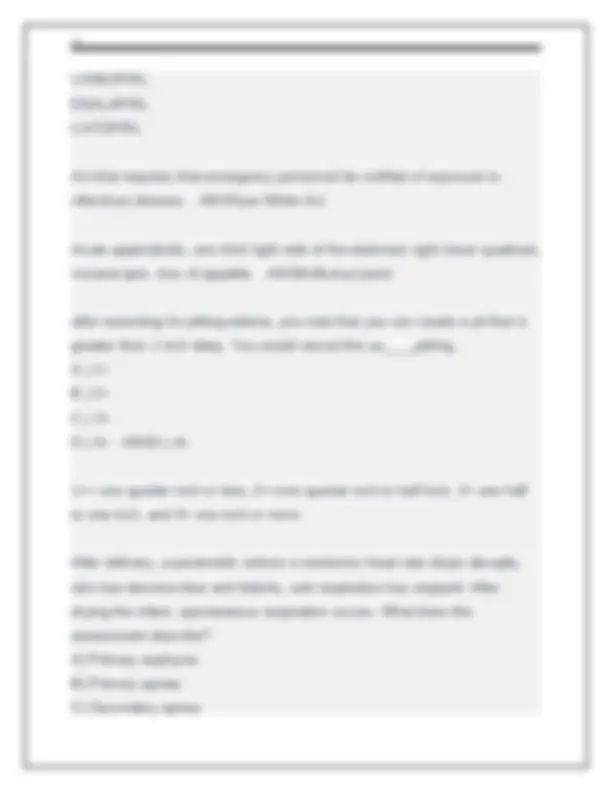
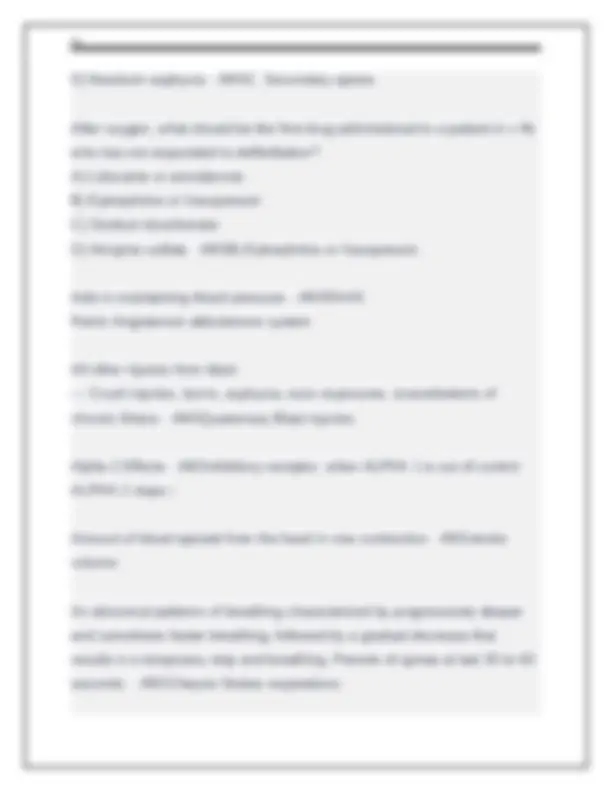
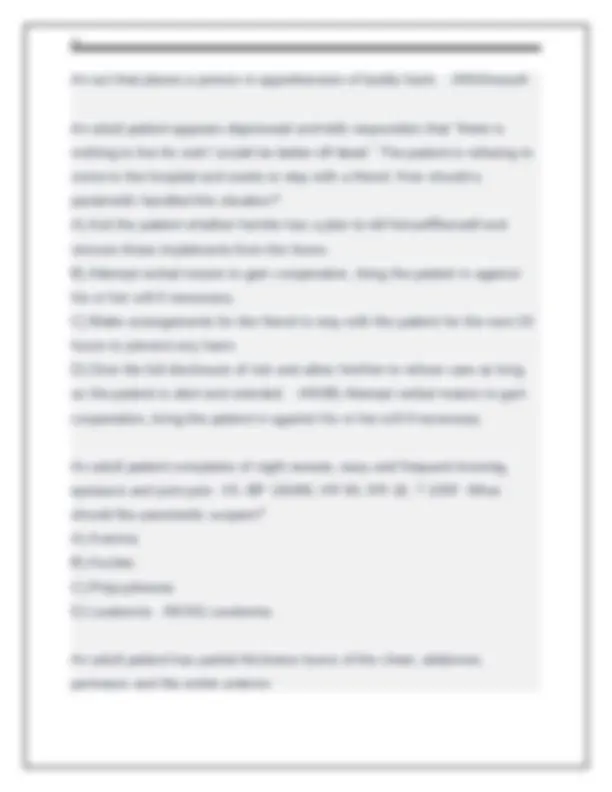
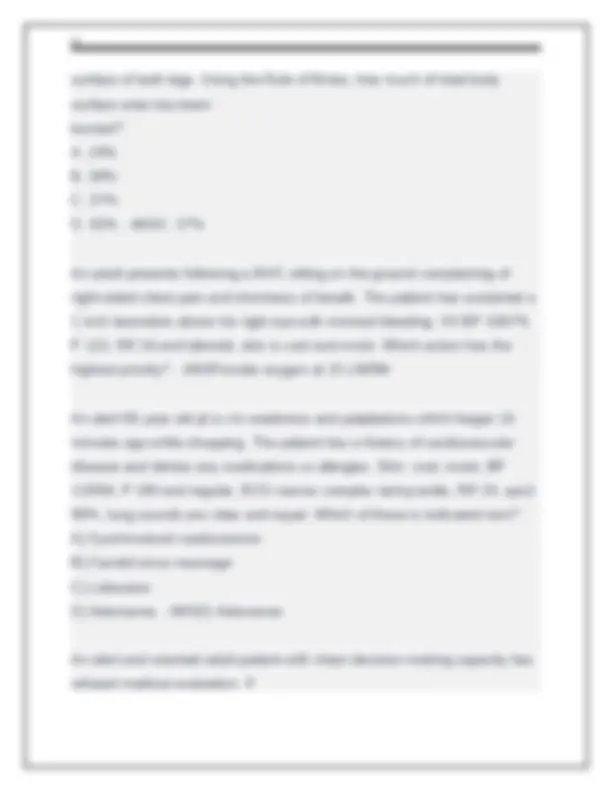
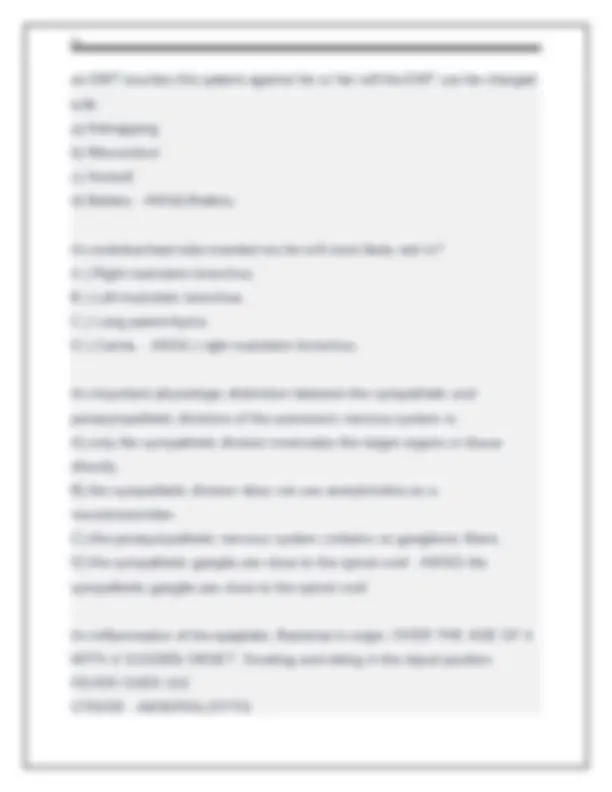
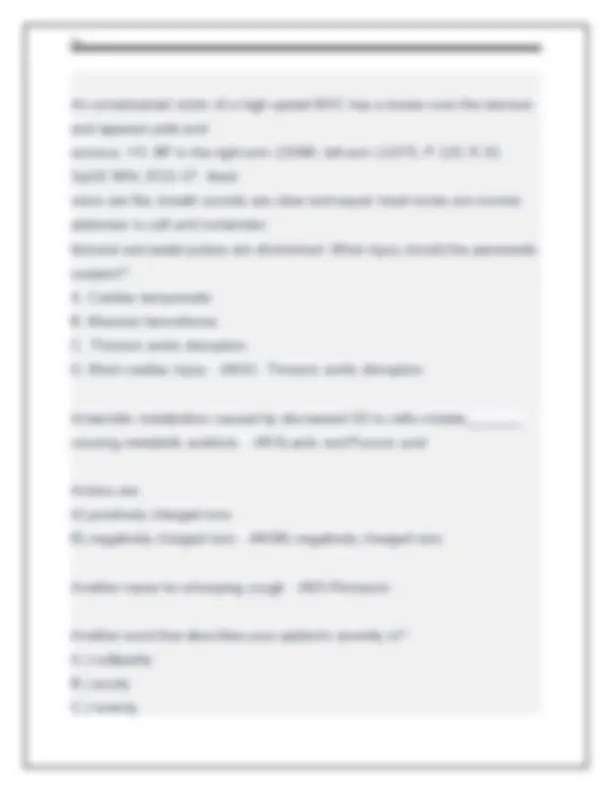
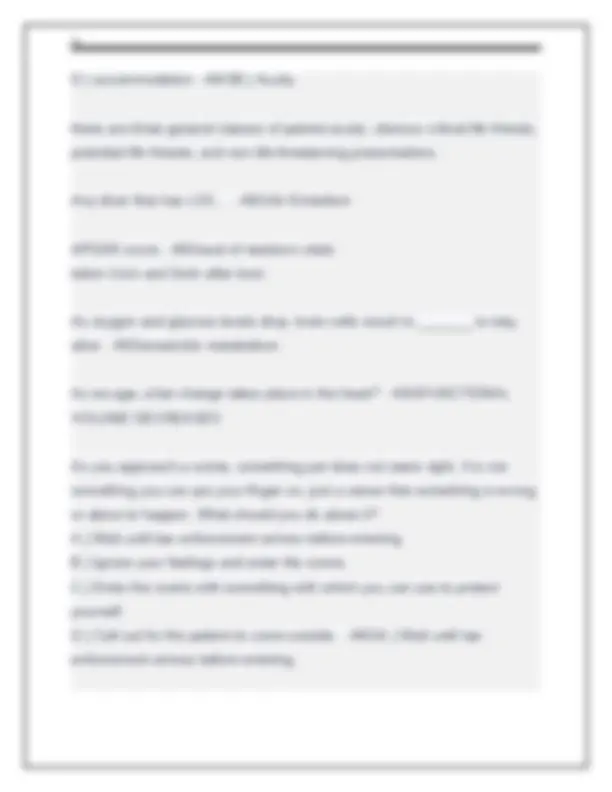
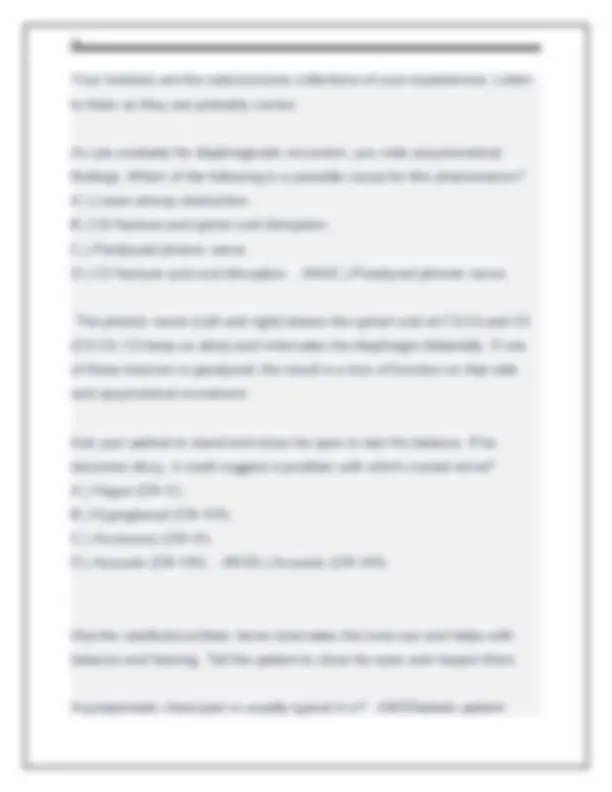
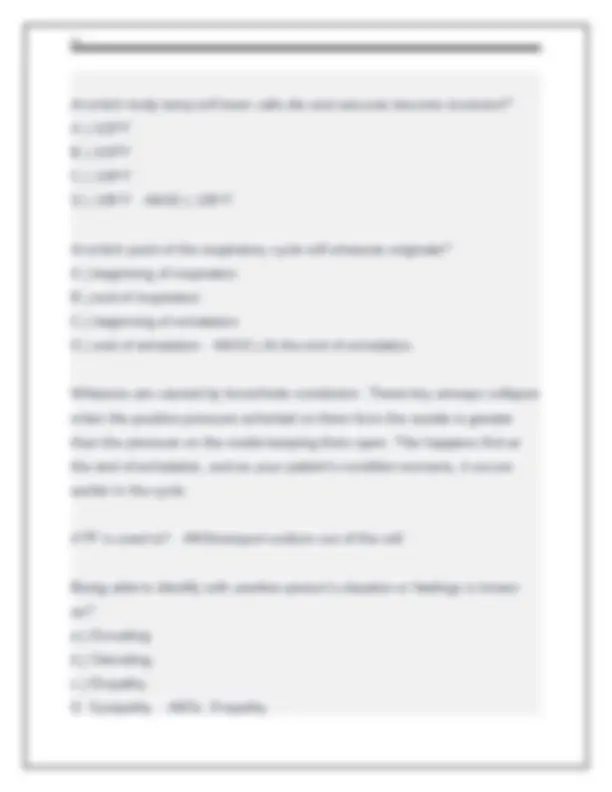
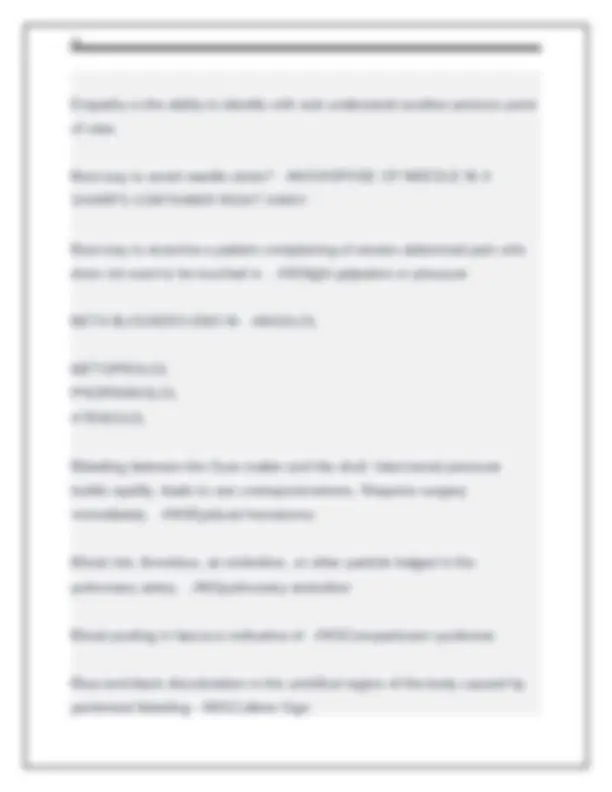
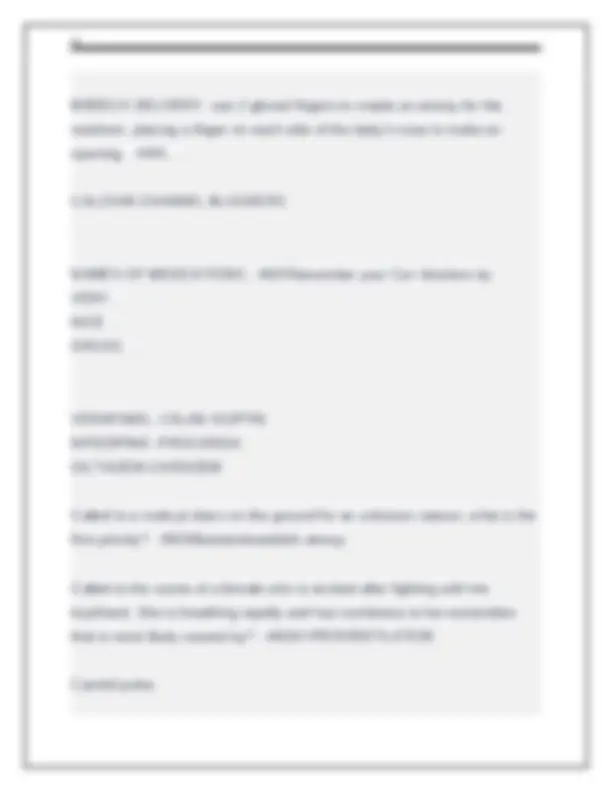
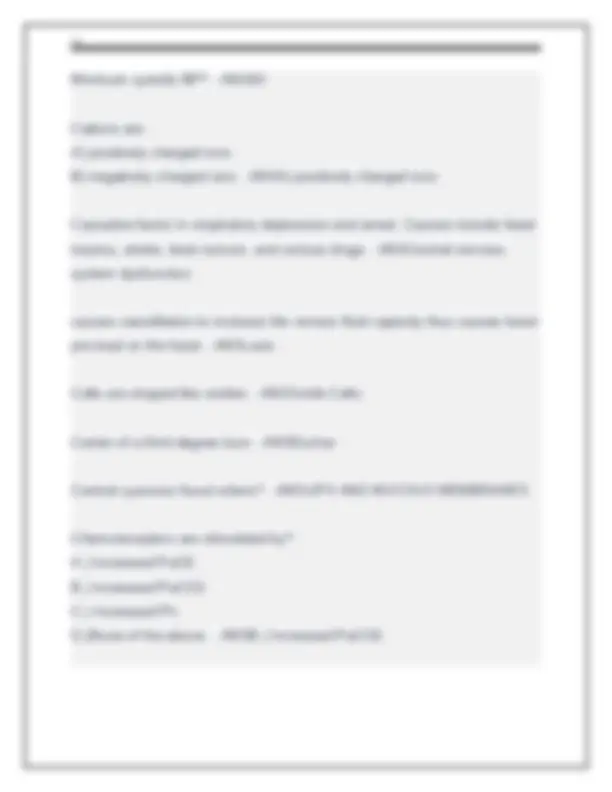
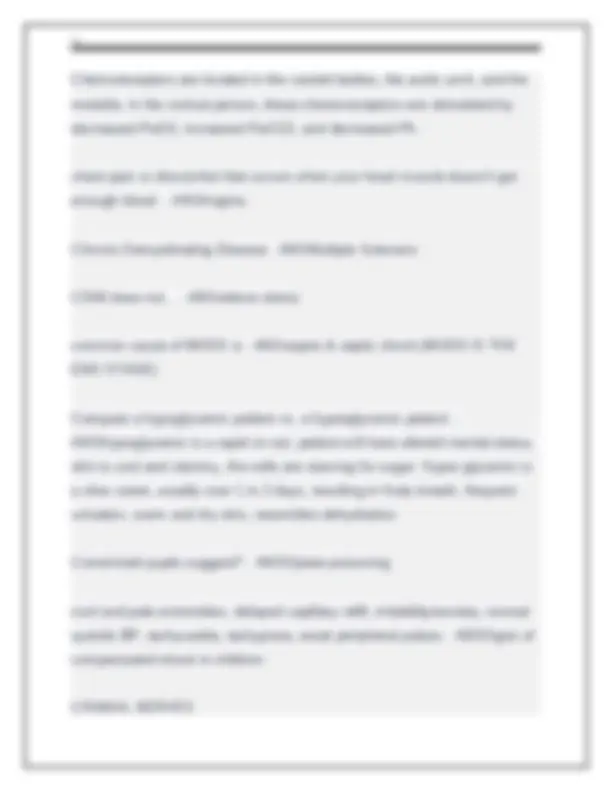
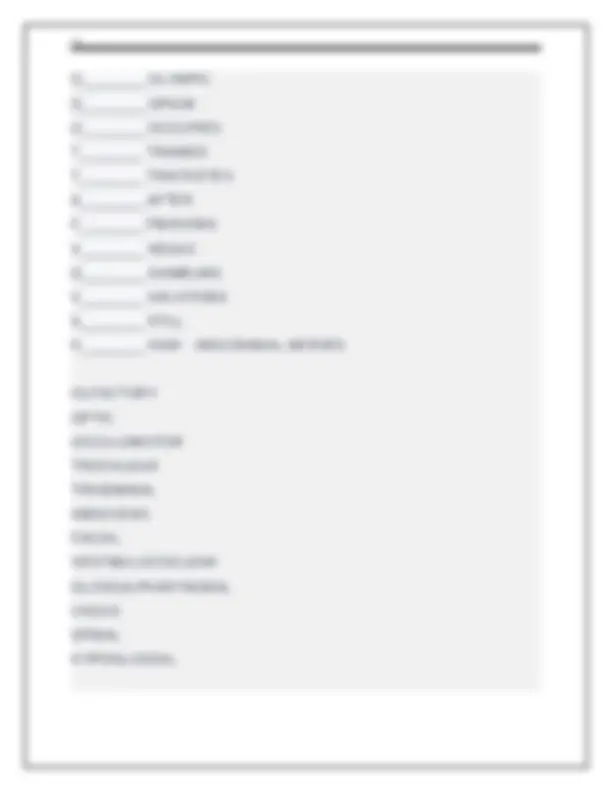
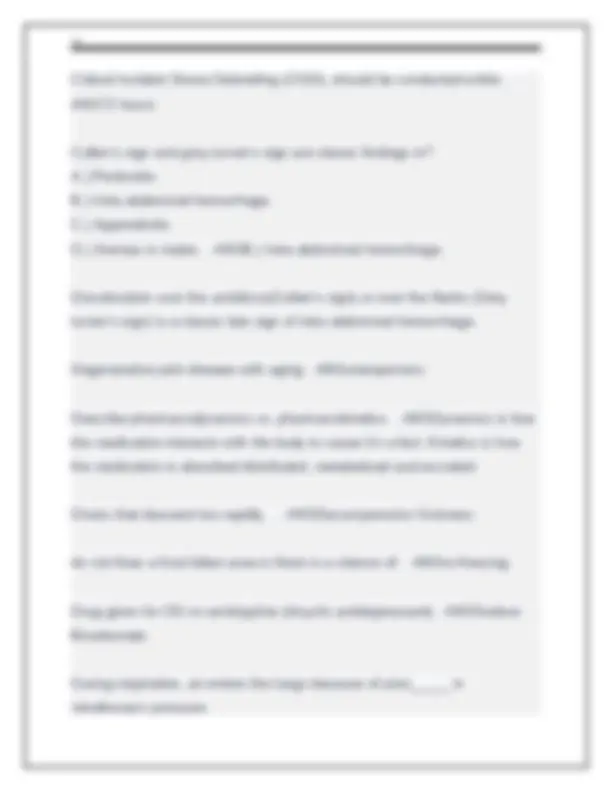
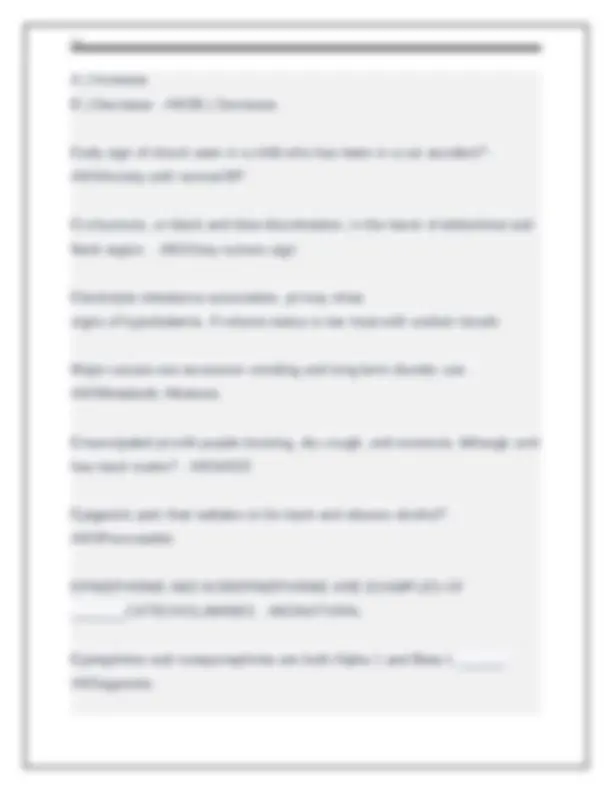
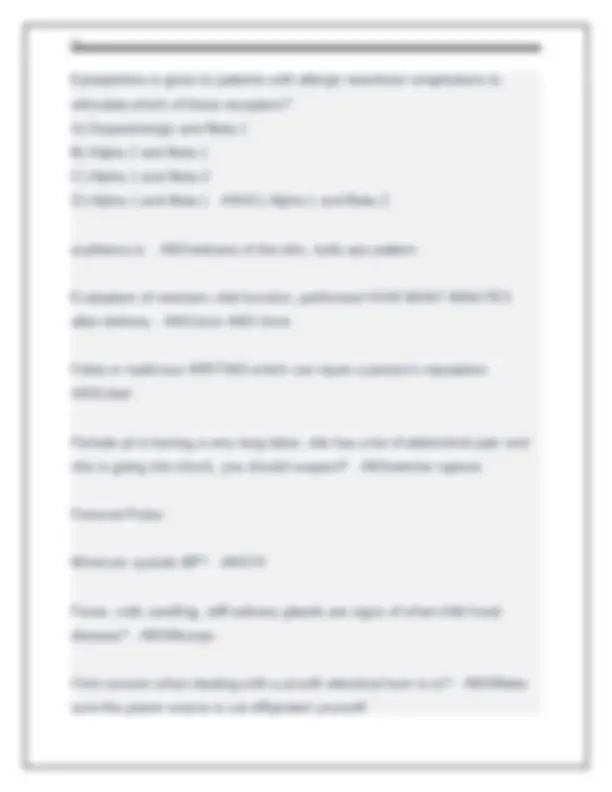
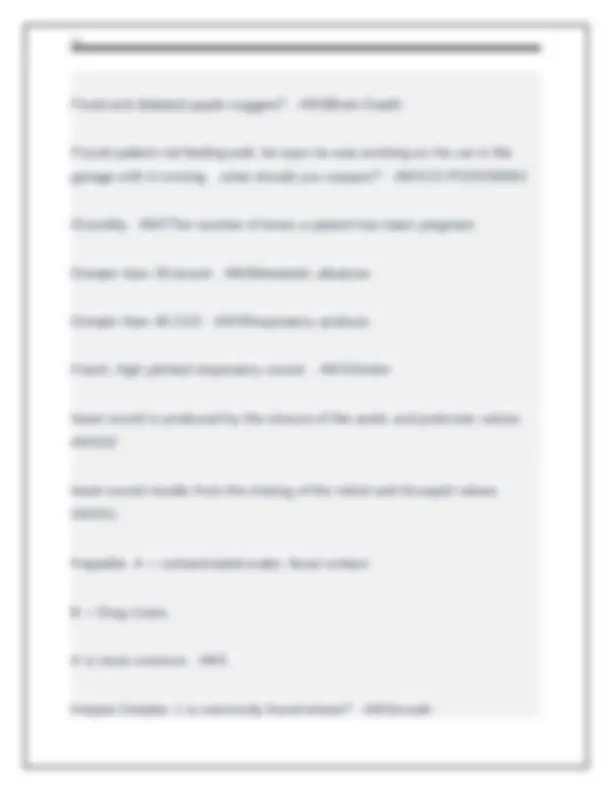
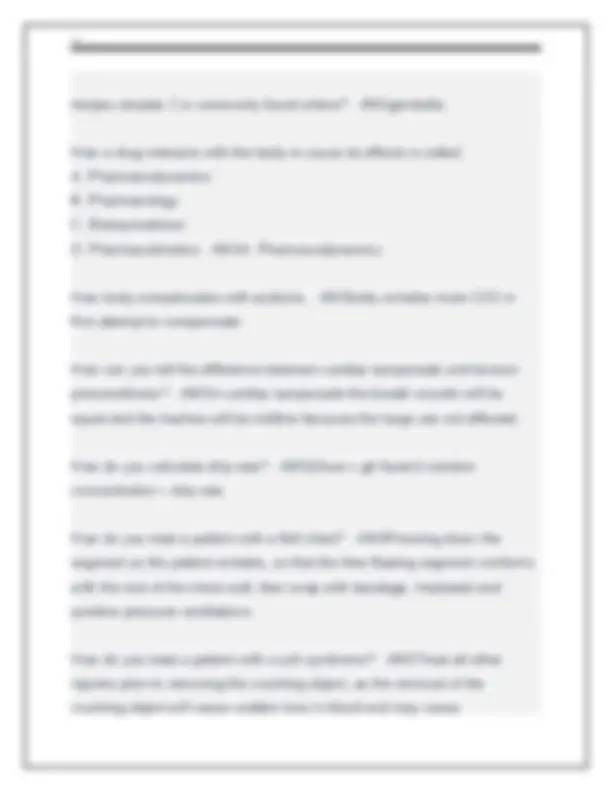
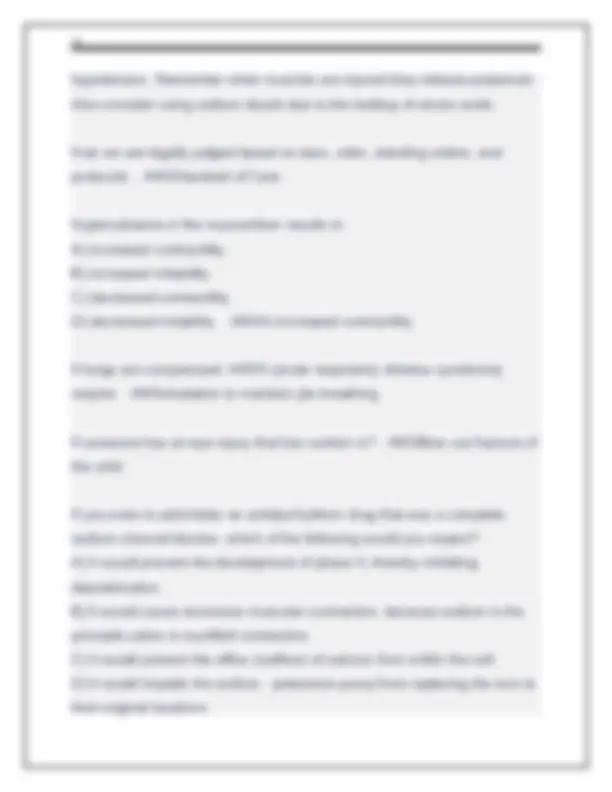
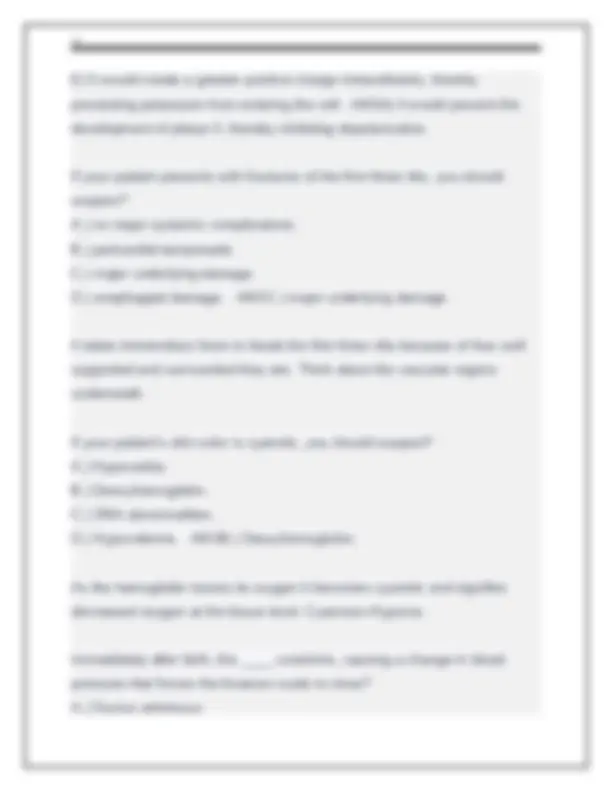
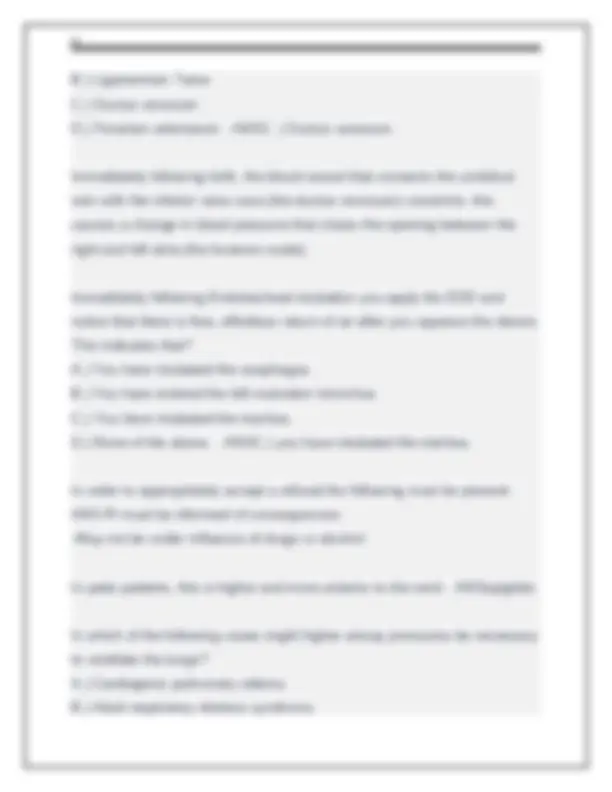
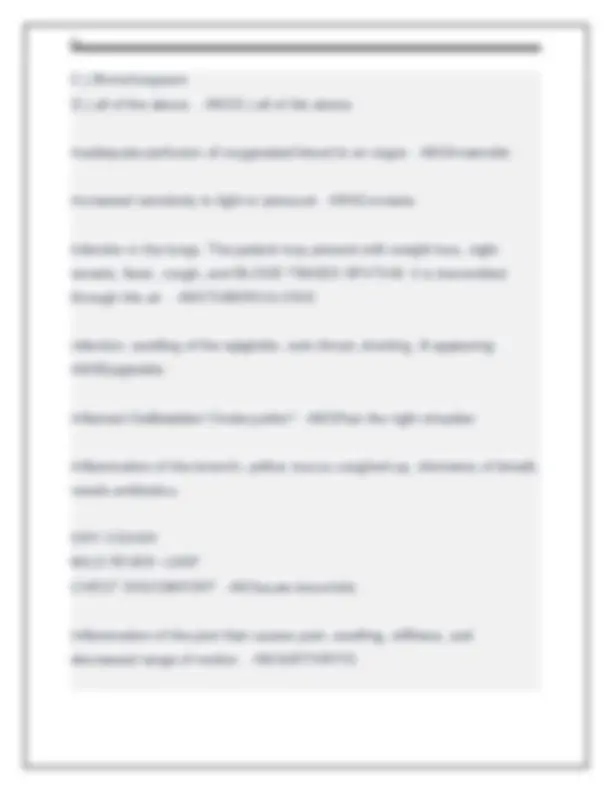
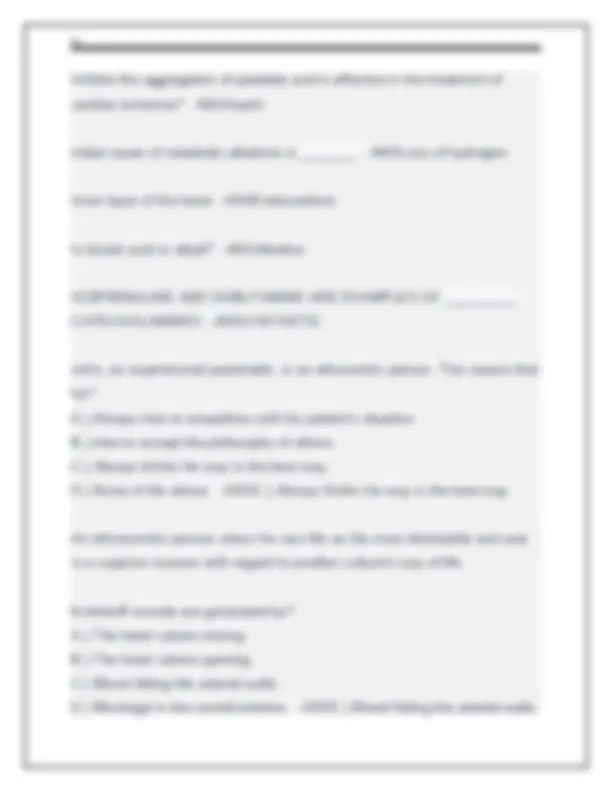
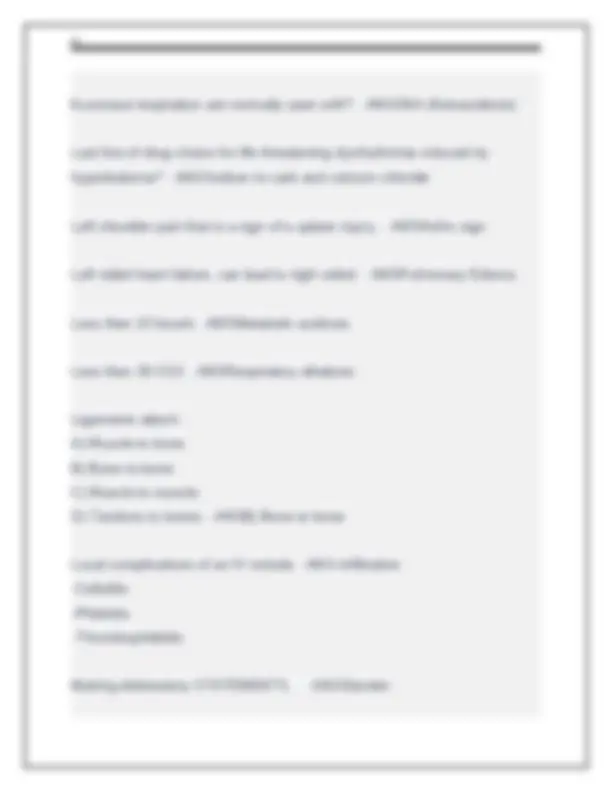
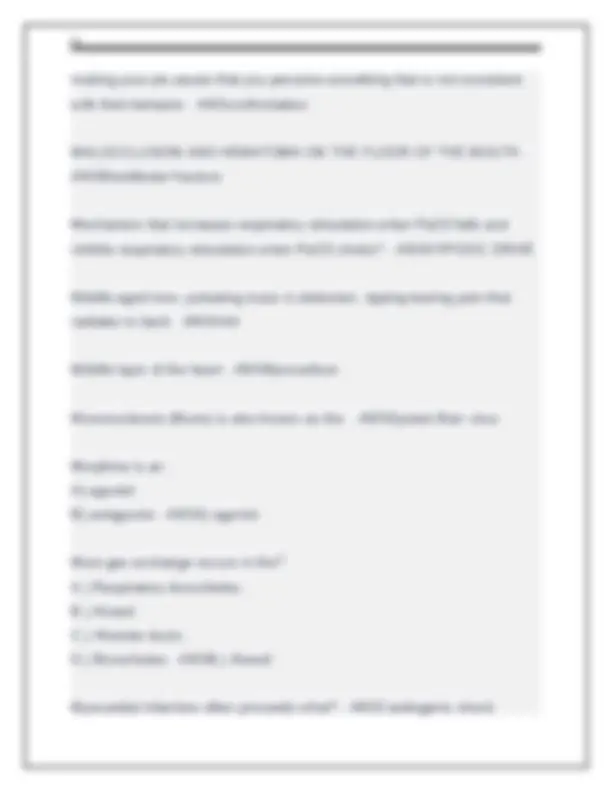
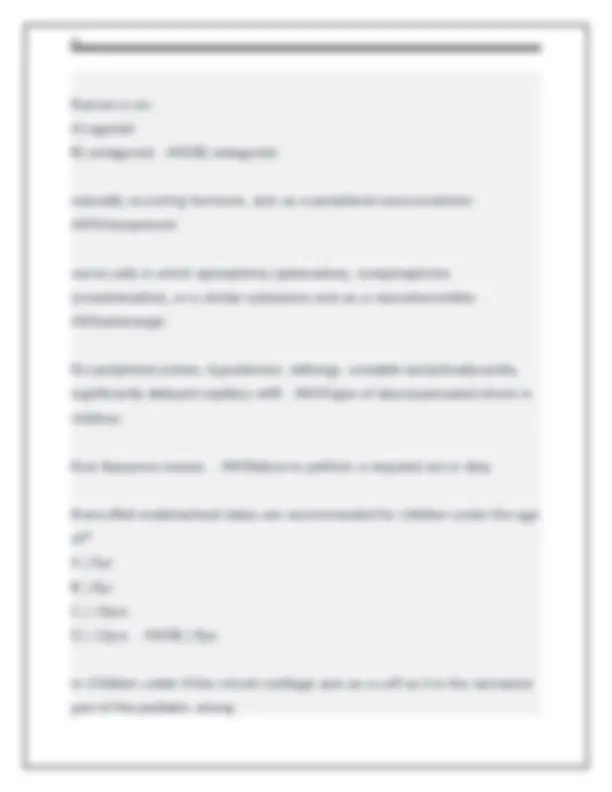
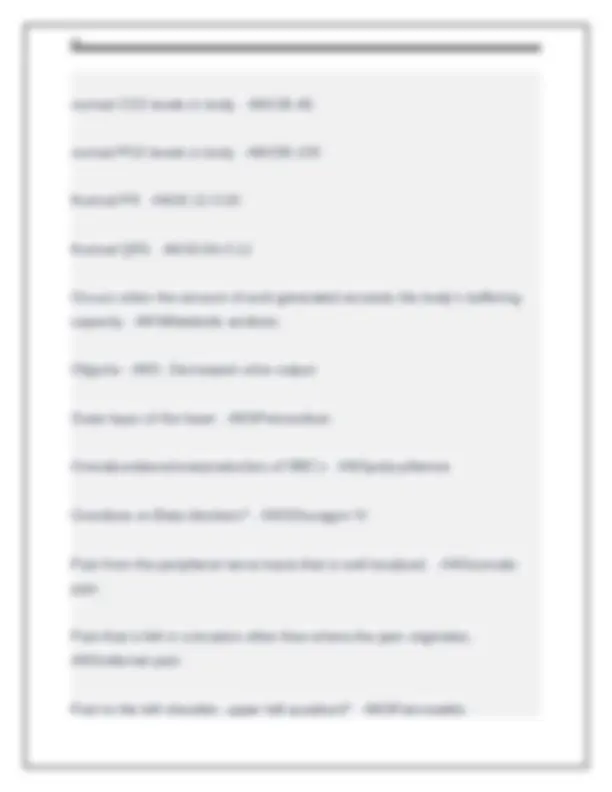
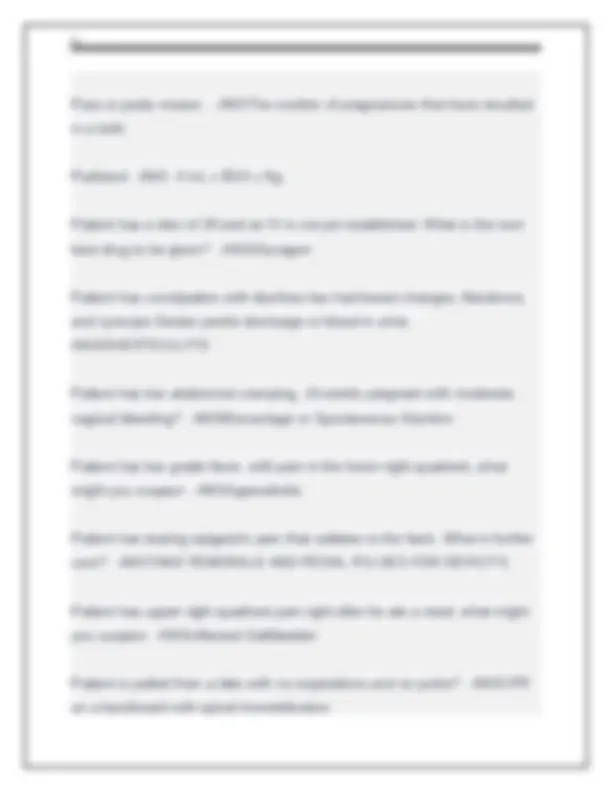
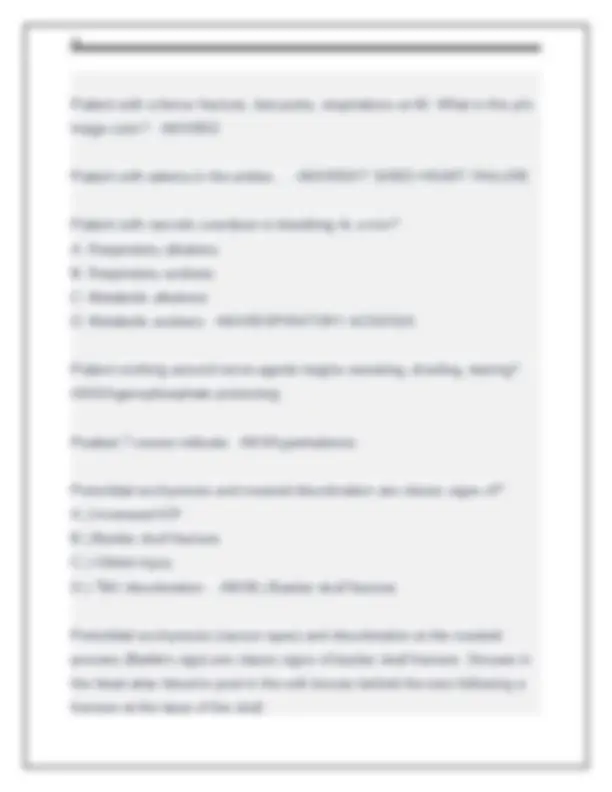
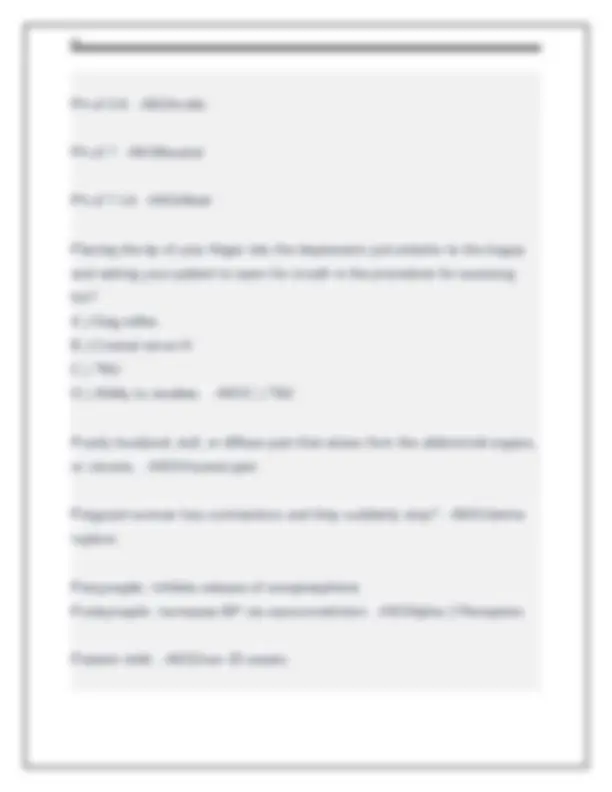
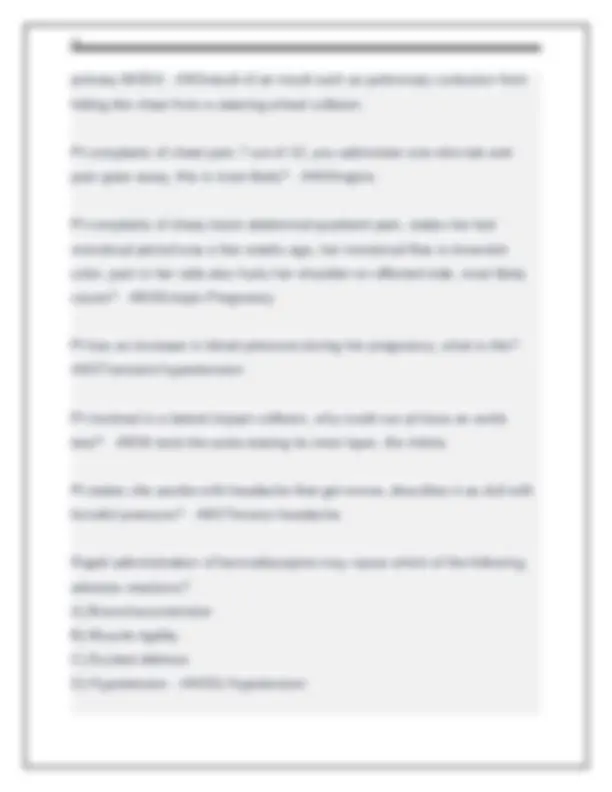
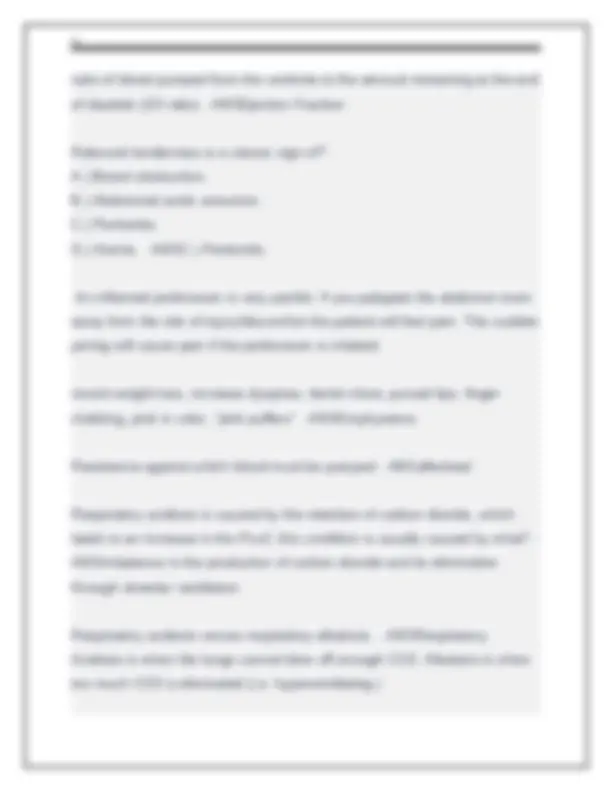
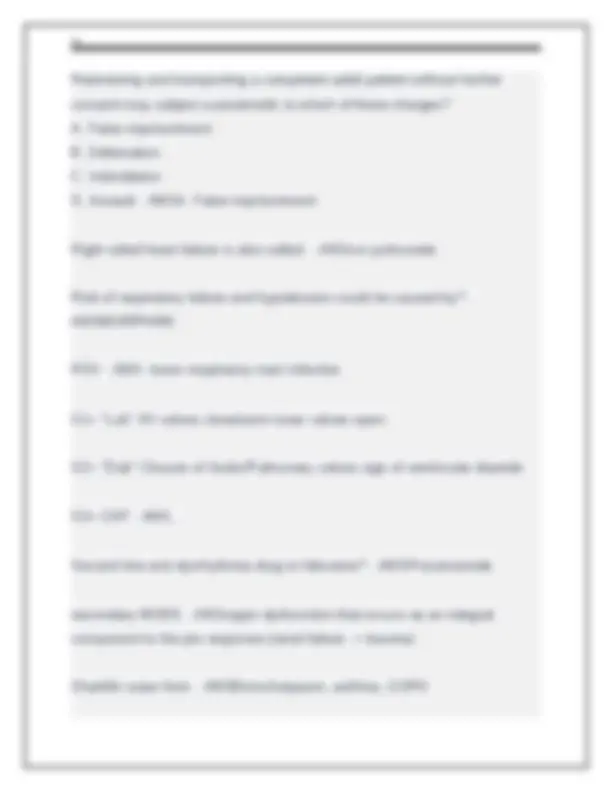
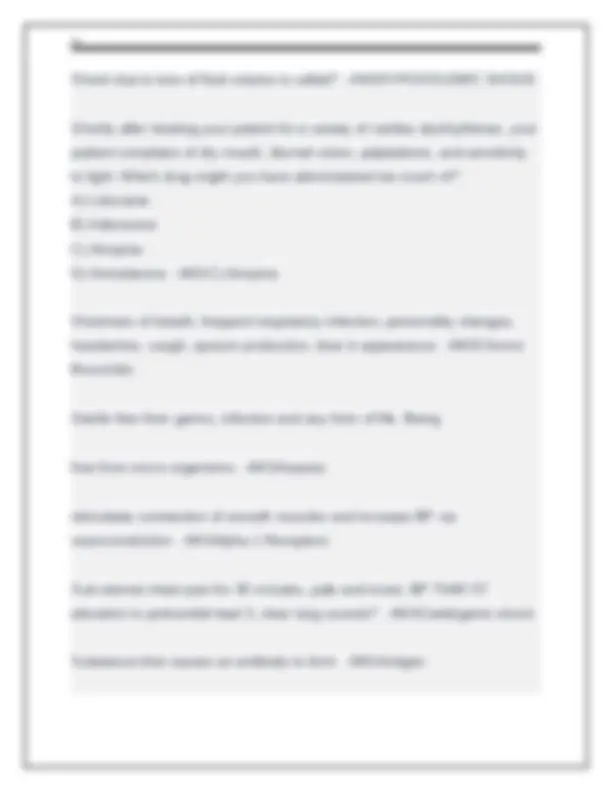
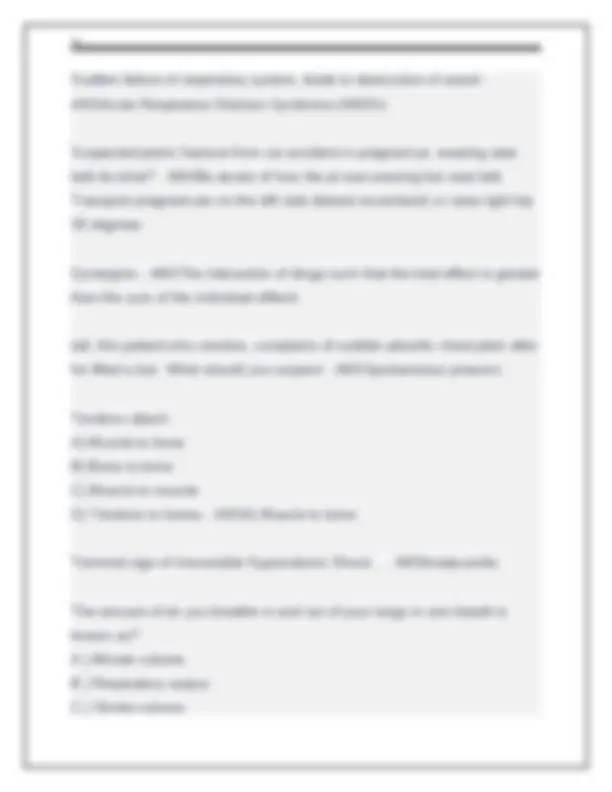
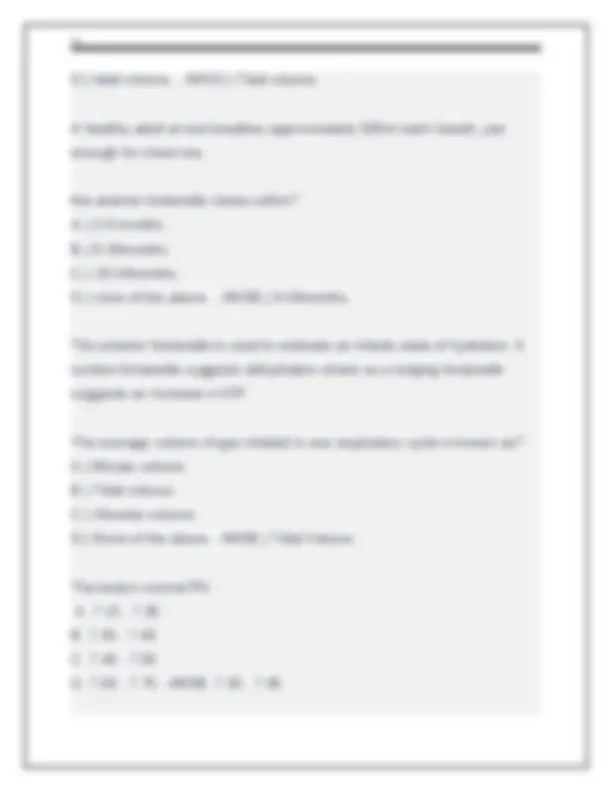
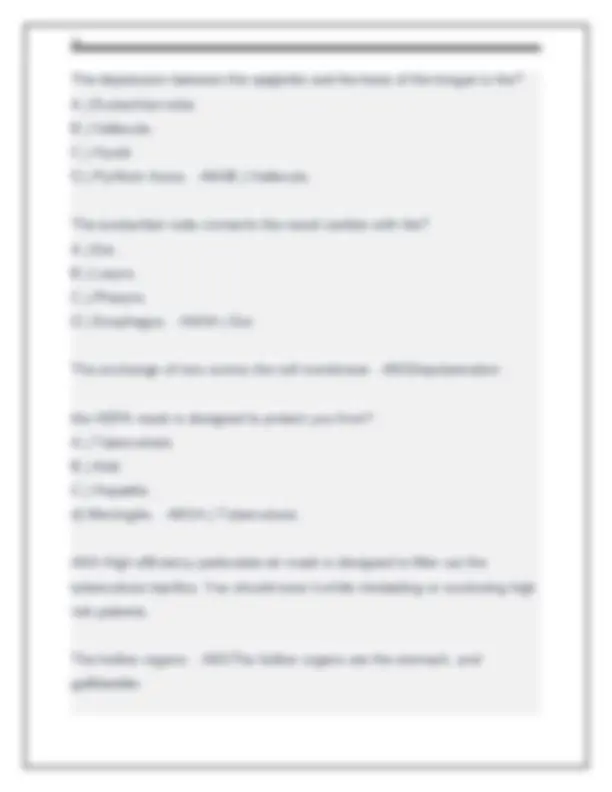
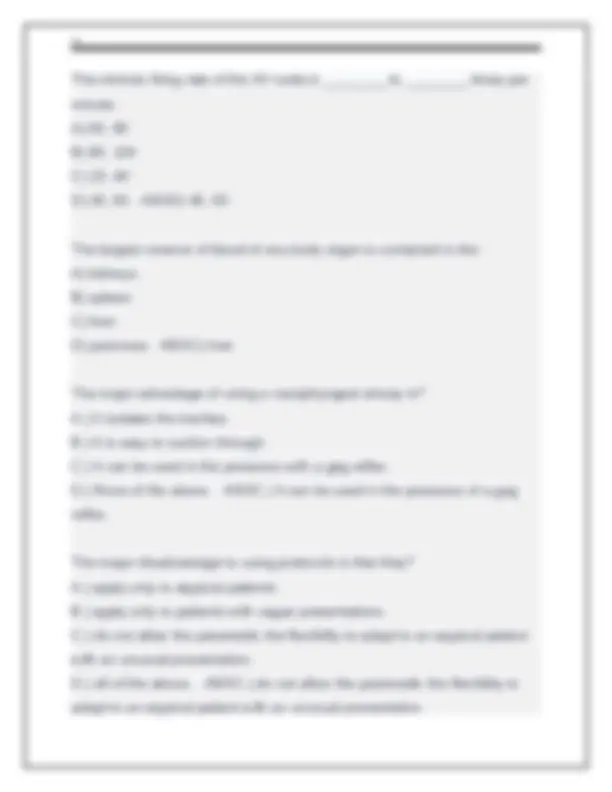
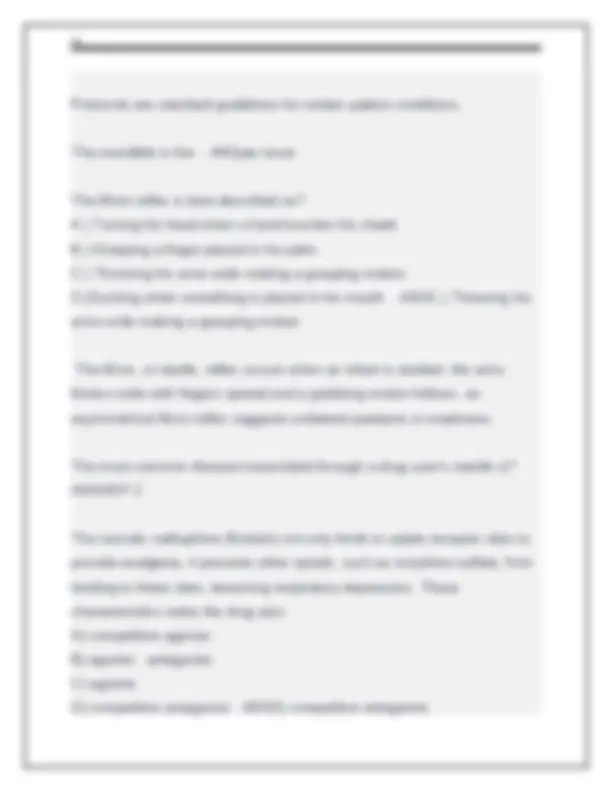
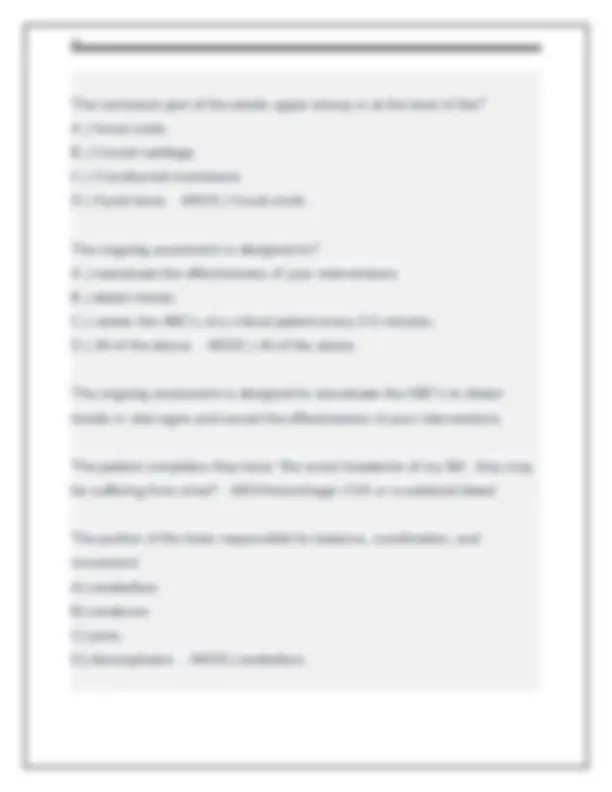
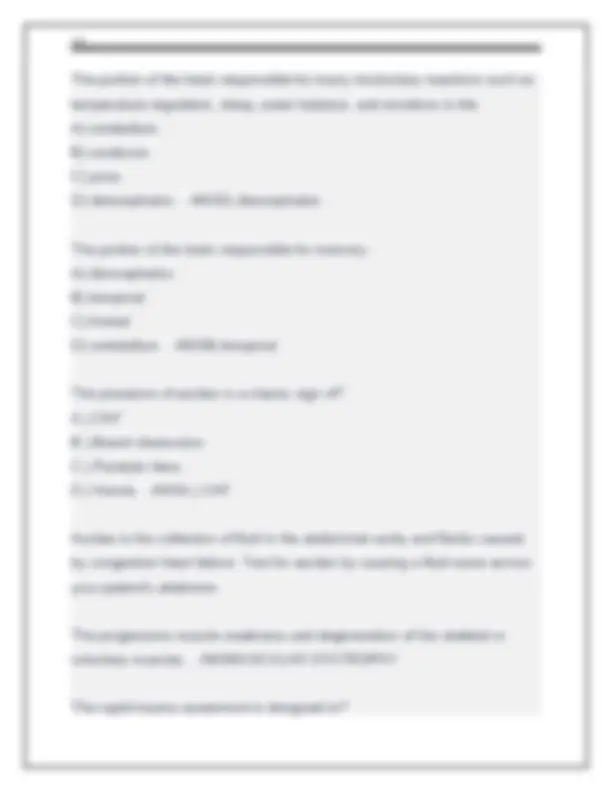


Study with the several resources on Docsity

Earn points by helping other students or get them with a premium plan


Prepare for your exams
Study with the several resources on Docsity

Earn points to download
Earn points by helping other students or get them with a premium plan
Community
Ask the community for help and clear up your study doubts
Discover the best universities in your country according to Docsity users
Free resources
Download our free guides on studying techniques, anxiety management strategies, and thesis advice from Docsity tutors
Students- Paramedic Exam Practice Questions with Correct Verified Answers 2025-2026. Graded A
Typology: Exams
1 / 149

This page cannot be seen from the preview
Don't miss anything!





























































































____ pleura covers the lungs. A.) Visceral. B.) Parietal. C.) Pulmonary D.) Respiratory. - ANSA.) Visceral. he lungs are covered ny connective tissue called pleura. It has two layers: The visceral pleura (covers the lungs) and the parietal pleura (lines the inner chest wall). "adult onset diabetes", produces some insulin, but the body cannot effectively utilize that insulin. - ANSType 2 diabetes "Juvenile diabetes, is when the patient does not produce insulin at all, usually occurs at a young age. - ANSType 1 diabetes (located in the heart) stimulates heart, dilates bronchioles, dilates blood vessels in skeletal muscle/brain/heart, aids in breakdown of glycogen into glucose - ANSBeta 1 Receptors ON THE TEST
3 blast injuries - ANS- Primary: blast itself
Beta 1 Effects - ANS(Heart) Increase force of contraction Increase heart rate Increase conductivity ON THE TEST Beta 2 Effects - ANS(LUNGS) Bronchodilation ON THE TEST Blast Injuries from displacement of victim by the blast wind — Blunt/penetrating trauma, fractures, and traumatic amputations - ANSTertiary Blast injury ON THE TEST Blast Injury from over-pressurization force (blast wave) impacting the body surface — TM rupture, pulmonary damage and air embolization, hollow viscus injury - ANSPrimary blast injury ON THE TEST
Blast Injury from projectiles (bomb fragments, flying debris) — Penetrating trauma, fragmentation injuries, blunt trauma - ANSSecondary blast injury ON THE TEST Calcium Channel Blockers have a ___ dromotropic effect - ANSNegative ON THE TEST disorder of muscle movement and tone... is a congenital disease - ANSCerebral Palsy ON THE TEST Drugs that are used to:
Left-Sided Heart Failure - ANS(LUNGS) Pulmonary edema ON THE TEST Minute Volume is calucated by - ANS- RR x Tidal volume ON THE TEST Neurotransmitter widely distributed in body tissues, with the primary function of mediating the synaptic activity of the nervous system - ANSACETYLCHOLINE ON THE TEST Patient has deep productive cough with yellow‐brown sputum, complaining of fever and chills, has weakness and malaise, what should you suspect? - ANSPNEUMONIA ON THE TEST Potentiation - ANS-enhancement of the effect of one drug by another drug ON THE TEST
Right Sided Heart Failure - ANSPedal Edema (Hypotension) Will eventually turn into left-sided heart failure ON THE TEST Seizure characterized by an aura and focal findings lasting about 1‐ 2 minutes this is? - ANSComplex partial seizure ON THE TEST Signs of peritonitits - ANSrigidity and involuntary guarding ON THE TEST Small, bulging sacs or pouches in the inner lining of the intestines that become inflamed or infected. - ANSDiverticulosis ON THE TEST Sodium Channel Blockers - ANSNegative Dromotropic effect ON THE TEST
What makes a person a candidate for a nasal intubation? - ANScardiac arrest with failed attempts at intubation ON THE TEST What type of effect does Atropine have? - ANSPositive chronotropic ON THE TEST When assessing a patient, you notice that the patient has difficulties breathing, they are sweating excessively, coughing up blood, orthopnea, pink frothy sputum, and appear to have signs of anxiety. Which of the following conditions is present in the patient? A. Pneumonia B. Shock C. Asthma attack D. Pulmonary edema - ANSD. Pulmonary edema ON THE TEST Who can you give a copy of the PCR without a subpoena or signed consent? - ANS3rd party payer ON THE TEST
You are transporting a patient with a chest injury following a/an MVC. Your partner has intubated the patient and is preforming bag-valve-mask ventilations. He suddenly complains that the bad is becoming increasinlgy harder to squeeze. You reasses your patient and note pronounced JVD, tachycardia and hypotension. The most likely cause for this change in condition is? A.) Pericardial tamponade. B.) Tension pneumothorax. C.) Massive hemothorax. D.) diaphragmatic hernia. - ANSB.) Tension pneumothorax. A bag that become increasingly more difficult to squeeze means something is inhibiting lung inflation. This is a classic description of a tension pneumothorax. if you asses lung sounds you will notice, absence on the affected side and deminished on the other side. In this case immediately decompress the chest with a large bore catheter. ON THE TEST Your patient presents with unequal femoral pulses and a cool, ashen left leg. This could be the result of a? A.) thoracic aneurysm. B.) abdominal aneurysm. C.) pulsus paradoxus. D.) deep vein thrombosis. - ANSB.) abdominal aneurysm.
Skin is warm and dry with dusky nail beds, and spo2 88% on RA. Which of these is most likely the cause of JVD and edema in this patient? A) Right ventricular failure B) Left ventricular failure C) Renal insufficiency D) Pulmonary edema - ANSA) Right ventricular failure ON THE TEST A 65 y/o patient with COPD presents with sudden onset of right-sided chest pain and shortness of breath after coughing vigorously. Neck veins are flat, the trachea is midline, lung sounds are absent on the right and normal on the left. Assessment reveals no fever or hemoptysis. VS: BP 132/78, P 110, R 30 and shallow, SpO2 92%. What should a paramedic suspect? A. Spontaneous pneumothorax B. Hyperventilation syndrome C. Pulmonary embolism D. Pleurisy - ANSA. Spontaneous pneumothorax ON THE TEST A 72-year-old patient woke up in the middle of the night complaining of shortness of breath, is speaking in 2-3 Word sentences and is sitting upright in a tripod position. The patient had an acute MI two years ago. VS: BP 160/90, P 120 and irregular, ECG atrial fib, RR 36, spo2 86%, lung
sounds have diffused bilateral crackles. Responders observe flat neck veins and no pedal edema. What should the paramedic suspect? A) Right sided heart failure B) Left sided heart failure C) Chronic congestive heart failure D) Cardiogenic shock - ANSB) Left sided heart failure ON THE TEST A bacterial infection TRANSMITTED BY TICKS in rural areas. Commonly presents with skin rash around the area of the bite, flu-like symptoms, stiff necked, fever, swollen nodes, headaches, fatigue, muscle aches, and joint pain, with a "BULLS-EYE" rash. IF LEFT UNTREATED IT CAN CAUSE NEURO AND CARDIAC ISSUES LIKE AV BLOCKS. - ANSLYME DISEASE ON THE TEST A complication of an IV causing it to be inflamed and painful - ANSPhlebitis ON THE TEST A complication of diabetes, typically type two, in which high blood sugar causes severe dehydration, increases molarity and high risk of complication, coma, and death. - ANSHHNK
A conscious adult presents with a rapid radial pulse and BP 100/70. The EKG shows regular monomorphic v tach. After applying oxygen and establishing vascular access, what action is appropriate next? A) Cardioversion B) Adenosine C) Magnesium D) Verapamil - ANSB) Adenosine ON THE TEST A diabetic patient complains of flu like symptoms for the last three days. Skin is flushed, warm, and dry with poor turgor. VS: BP 108/70, HR 90, RR 32 And deep. Breath smells sweet. The glucometer reads "HIGH". What should the paramedic suspect? A. Hyperglycemic hyperosmolar non-ketotic syndrome B. Severe metabolic alkalosis C. Insulin shock D. Diabetic ketoacidosis - ANSD. Diabetic ketoacidosis (DKA) ON THE TEST A girl is in school are starts having tingling in her mouth and lips. She is having a lot of anxiety but has experienced no trauma. What could be this patients issue? - ANShyperventilation syndrome
A patient has a petit mal seizure, they are most likely going to have a change in: - ANSbehavior ON THE TEST A patient has a pneumothorax, what kind of pressure is lost in the chest cavity? - ANSnegative pressure ON THE TEST A patient has had a nosebleed for a few days. He complains that it will not stop. The blood is running down the back of his throat. Patient has ingested enough blood that it has caused nausea and vomiting. The emesis looks like ground coffee. Which of these do you suspect to be the cause? a) posterior nosebleed b) choriod plexus c) kesselbachs plexus d) anterior nosebleed - ANSa) posterior nosebleed Posterior nosebleeds usually involve larger blood vessels than anterior nosebleeds. They are less common, but can be more severe. They start in the blood vessels in the back of the nose and blood usually runs down into the throat. Posterior nosebleeds can be harder to stop. ON THE TEST
clear bilaterally. Skin is pale and diaphoretic. Which drug should be administered first? A. Atropine B. Adenosine C. Dopamine D. Epinephrine - ANSA. Atropine ON THE TEST An area of hyporesonance on one side of the chest may indicate a: - ANSHemothorax HYPER---PNEUMO HYPO---HEMO ON THE TEST ARDS (acute respiratory distress syndrome) - ANSsurfactant is displaced ON THE TEST asking your patient for more info when some aspect of the story is vague or unclear to you - ANSclarification ON THE TEST Beck's Triad and what it indicates - ANS- Muffled heart tones